There is so much “fake history” going around about the Medieval Era that I decided to write this article and create this;

There are a lot of myths and misconceptions about “The” Middle ages.
This era lasted roughly 1000 years and life was very different at certain times and in different places, so it is a bit silly and difficult to make blanket statements about this subject.
Nevertheless when talking about Medieval Europe or seeing movies set in that era so many things are brought up that are totally incorrect.
And yes some of these myths are still being taught in schools and are thus quite common.
Many of these misconceptions come from Victorian writers and historians who reflected their Victorian society into how they thought Medieval life was.
So I made this fun Medieval Myths Bingo card.
Print it out and get it ready when watching yet another Hollywood blockbuster set in the Medieval era, or bring it along to museums and school lessons.
What I have written here is based on the opinions of modern day historians and experts who generally get their information from actual Medieval records, archaeological finds, evidence and other sources.
Don’t take my word for all of this being the absolute truth, use the links I share and also do your own research before making your mind up.
Remember though; the Middle ages lasted 1000 years and some of these topics relate to the early Medieval period, some to the late.
And Europe was and is quite large so some bits are about England, some about France, etc.
When I speak of Europe in this article I mean the region we call Europe today.
Also; this is a work in progress.
I welcome improvements and corrections, also in the text below and if need be in the Bingo card.
Please leave comments.
Quick links;
- Everyone has bad teeth
- Nobody gets old
- Always war
- Only the clergy could read
- Women have no rights or jobs
- Pigs & chickens in the street
- Empty chamber pot from window
- Common people never wash
- Everyone was short
- Dirty, muddy streets
- Earth is flat
- Vikings with horned helmets
- Nobody drank water
- Witch burnings everywhere
- Knight’s armour too heavy to move in
- Bland and tasteless food
- People never travelled
- Not racially diverse
- People were ignorant
- No Medical knowledge
- Death penalty common
- No table manners
- Torches all over the place
- Two finger salute
Everyone has bad teeth
Although dental care was not as advanced as it is today Medieval people also had less need for it as their diets generally didn’t contain (much) refined starches, sugars and acids.
The modern diet is a lot better for the bacteria that love damaging teeth and enamel. We consume soda, candy, additives but also tobacco and coffee, all bad for your teeth.
Medieval people had no or very little access to ingredients and foods that were really damaging to their teeth.
They also cleaned and brushed their teeth, there are Medieval recipes for tooth care and they used rags to rub their teeth with.
There were even tooth brushes but people also used chewed twigs as brushes, the Glycyrrhiza glabra plant was and is especially well suited for this job, it is better known as the Liquorice plant and actually contains compounds that prevent and treat tooth decay and gum disease!
These “chew sticks” have been used for thousands of years all over the world.
Tooth care wasn’t invented by one person or group but probably by people all over the world when they started having issues with their teeth.
There’s evidence that suggests prehistoric cavemen even used twigs to clean their teeth.
There were also tooth whitening recipes, mostly herbal and quite harmless.
Archaeological finds have shown that although the teeth on Medieval skeletons generally show more wear and plaque and tartar but they also showed a lot fewer cavities than you might expect.
Of course their teeth would not look like the unnatural way that is fashion today in some countries; lined up straight, so white it hurts your eyes, etc.
Toothache was a big problem and although often the only cure was a prayer there is also evidence for quite sophisticated dental intervention as well.
Yes, if plaque went untreated and turned into tartar it would affect the gum and eventually could lead to the loss of teeth.
Medieval people didn’t have perfect teeth, they did have lots of issues with their jaws, toothache, bone loss, etc.
It is far from uncommon to find Medieval skeletons with terrible dental issues and infections that caused death, even among young healthy people.
But their teeth weren’t as bad as they’re often depicted in movies or on TV, the cliche of black, yellow teeth and people with almost no teeth in their mouths just doesn’t really match what things were really like in Medieval Europe.
Things got a lot worse real quick when sugar became a bigger part of people’s diets.

And yes, if they did have a problem with their teeth the damage would be more extreme.
So if you did get an abscess, cavity or other problem you’d lose your tooth/teeth and spend the rest of your life walking around without it, something that doesn’t happen very often today.
It wasn’t till the 15th century that they started drilling teeth and filling holes with gold.
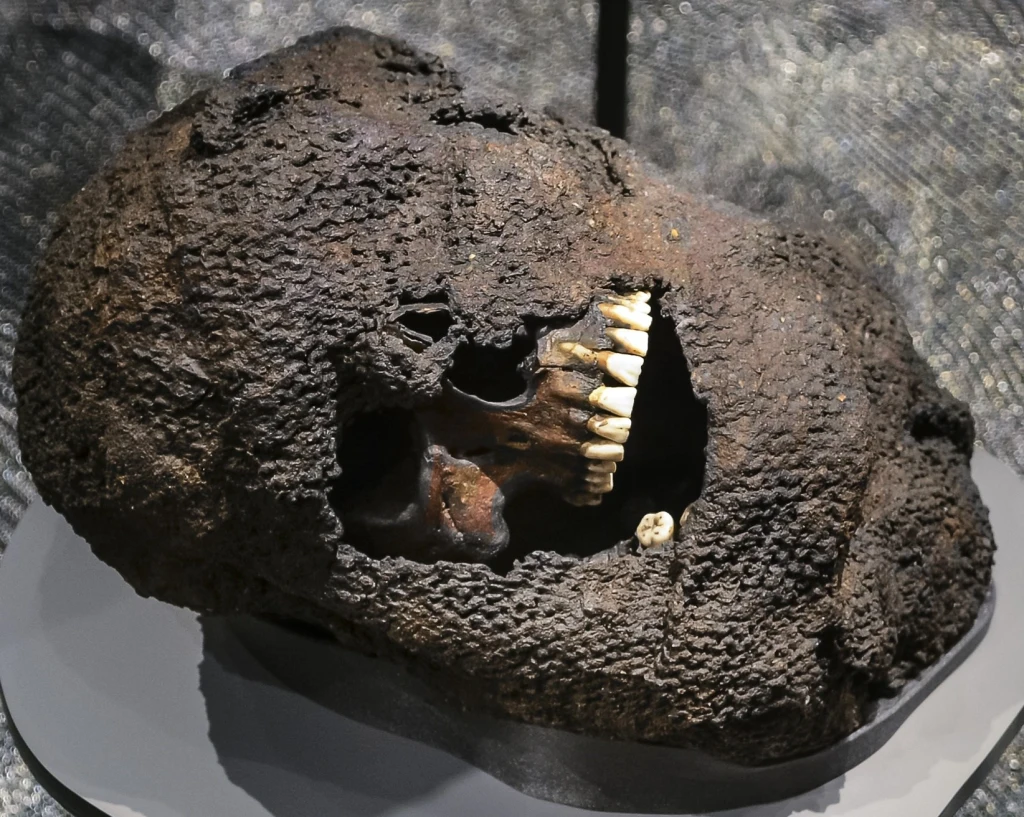
Interesting quotes;
From Descriptio Cambriae, written by Gerald of Wales in the twelfth century about the Welsh people:
‘Both sexes take great care of their teeth, more than I have seen in any country.
They are constantly cleaning them with green hazel-shoots and then rubbing them with woollen cloths until they shine like ivory.”
“When you get up in the morning, stretch your limbs, so that the natural heat is stimulated. Then comb your hair because this removes dirt and comforts the brain. Wash your face with cold water to give your skin a good colour and to stimulate the natural heat.Clear your nose and your chest by coughing, and clean your teeth and gums with the bark of some scented tree.”
Taddeo Alderotti, ‘On the Preservation of Health’, 13th century.
So in short; Medieval teeth were not as bad as most people and Hollywood seem to think.
People cared for their teeth but when things went wrong they went really really wrong.
Sources;
- The Journey Through Wales & The Description of Wales, by Gerald of Wales; Lewis Thorpe; Betty Radice
- Medieval Teeth
- Dental treatment in Medieval England
- Dr. Gary J. Wayne Oral & Maxillofacial Surgery
- Five Medieval Toothpaste Recipes
- Viking dentistry was surprisingly advanced
Nobody gets old
Life expectancy figures in Medieval times weren’t very high but that is because high child mortality rates are often included in the calculations.
A better insight in life expectancy can be obtained by looking at people who survived childhood and how old they were when they died.
Looking at church registers and the skeletons found at archaeological digs we can see that it was not that uncommon for people to live into their 60s and even 70s.
Of course many people still died much younger, women for instance risked their lives every time they got pregnant.
This puts life expectancy for those who survived childhood quite close to what it is today and even a little higher than it was for much of our history after the Medieval era.
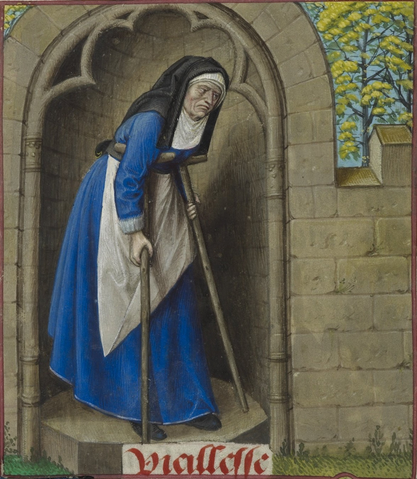
Although it is of course impossible to say anything about this subject for the whole of the Medieval era and world as situations differed immensely between certain regions and eras.
Nevertheless we can safely say that the idea of people never or rarely living past their 30s is a myth.
Sources;
- Misperceiving Life Expectancy in the Deep Past, by Dr. DeWitte
- The Life Cycle In Western Europe by Deborah Youngs
- ‘Medieval Life: Archaeology and the Life Course’ by Roberta Gilchrist
- Expectations of Life: A Study in the Demography, Statistics, and History of World Mortality
- Archaeologist debunking myth that most people died young prior to modern medicine
- Did Ancient people die young? By Dr. Christine Cave
- Estimation of Life Expectancy in the Middle Ages
- The lives and deaths of young medieval women: the osteological evidence By Shapland, Lewis & Watts
- BBC ‘Do we really live longer than our ancestors?’
Always war
This era is often depicted as violent and one of wars continuously happening. But we get this skewered view of the era because wars is what is written most about, daily life just wasn’t that interesting to historians a few decades ago.
It was not at all strange for a Medieval person to live their entire life without personally, physically experiencing war.
For instance according to some historians during the entire ‘War of the Roses’ that lasted 32 years there were only 13 weeks of actual combat.
Which would leave 1651 weeks of relative peace.
Only the clergy could read
Although education was not available to everyone it is also not true that only the clergy could read.
We don’t really know how many people were illiterate in Medieval Europe, for accessibility reasons I’ll use the term literacy for the ability to read and/or write in this article although of course mastering writing was quite something else than learning to read.
At the time nobody really went door to door asking if people could read or write, there are no records, that I know of, that show us exactly who could or couldn’t read or write anywhere in Medieval Europe.
So we base our knowledge on which written sources are left, which in many cases are expensive, rare and important manuscripts and books, illuminated, religious and often written in Latin or French, which may suggest that only those who were taught these languages, the educated, the politicians, rulers, clerics, etc. were literate.
Those who did not know Latin or French were considered illiterate, literally;
But common people who didn’t get a chance to learn (much) Latin did write, in their regional language, the languages they spoke, the vernacular dialect.
Often just phonetically, not caring about grammar or any standards such as there were for Latin.
To be able to write like this all you need to do is learn the alphabet.
Even for a commoner being able to keep records or leave a message would come in use sooner or later.
Unfortunately much of what common people wrote has been lost as they rarely got the opportunity to write books or even official documents.
They also used bark and wax with a stylus or stick, in stead of expensive vellum (parchment) and pen and ink.
Sadly that also meant their writings rarely survived very long.
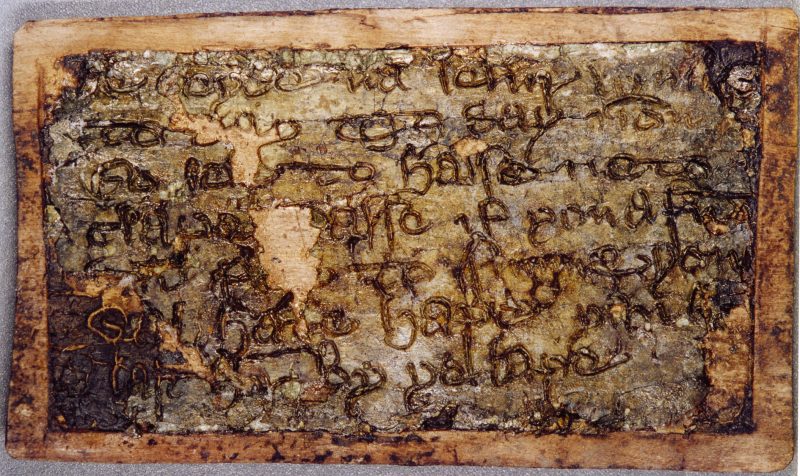
© York Archaeological Trust for Excavation and Research Limited
Wax tablets, styluses or the remains of these have been found all over Europe, some dating back to Roman times.
In the 1950s over 1000 birch bark writings were found in Russia, the unique condition of the soil in the region of Novgorod had preserved letters and drawings dating back to the 11th-15th century.
Over a hundred styluses were also found.
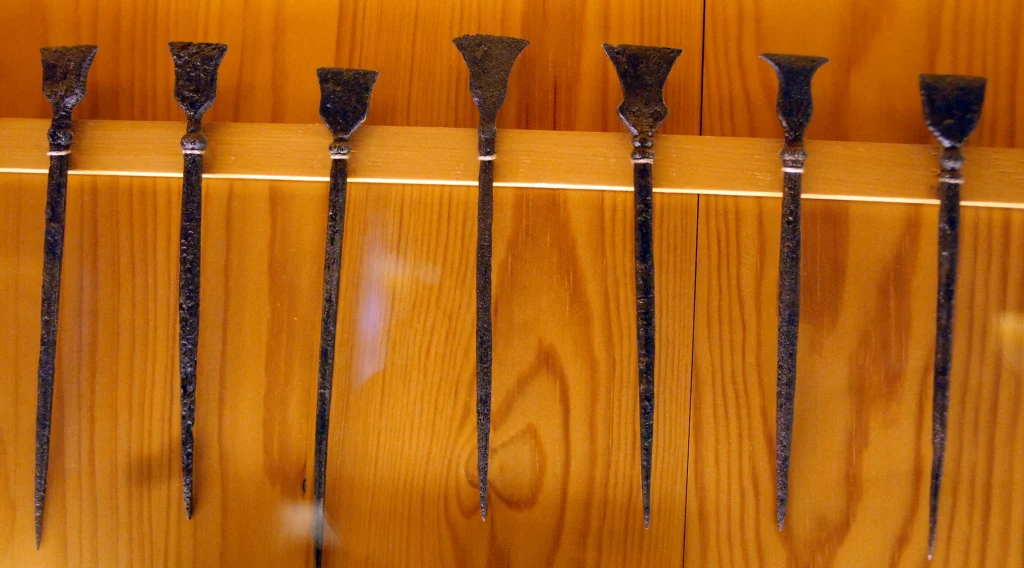
These were personal letters, business documents, very private messages, obscene stories and even school exercises and drawings made by children.
Most appear to have been written by common people and this find changed our ideas on literacy in that region at the time completely.
Seventeen writings by a boy called Onfim were found.
Experts have estimated his age to be between 6 and 7 years old and much of what he left behind for us appears to be homework.
He is practising the alphabet, copies of psalms and even some what may have been personal prayers asking God for help.
Just a young child learning to write by using a simple stylus and a piece of bark.

Also in the 1950s hundreds of medieval texts written on wood and bone were found in Bergen, Norway, the so called Bryggen inscriptions.
They are very similar to the Birch bark writings, they too appeared to have been written by common people.
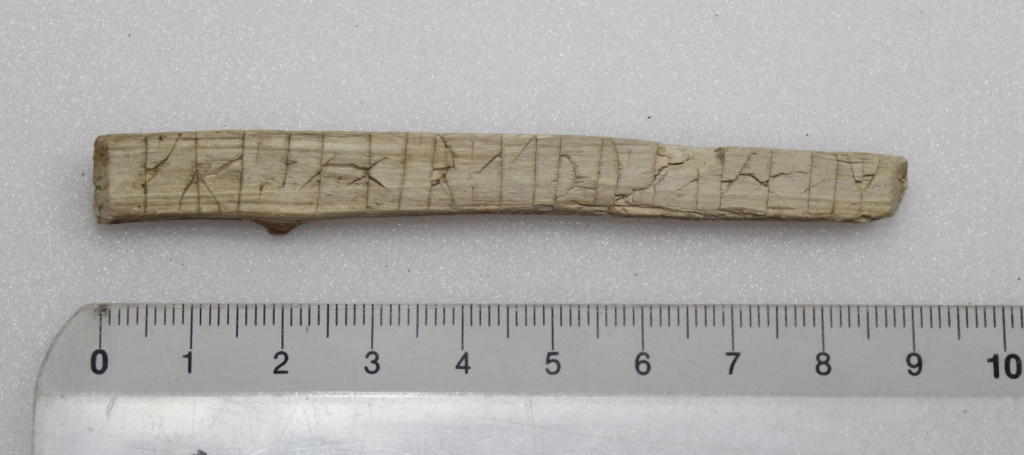
12th century, Norway.
So we have proof of three places in and near Europe that shows us that people were reading and writing in regional languages, we know that they used materials that are very rare to survive to the modern era, we found lots of tools being used to write and that it’s unlikely that just a few people did all that writing and owned all those styluses, how many styluses does one need?!
This of course does not prove that common people were reading & writing all over Medieval Europe, literacy levels would differ per era and per region, but I think you’ll agree that it would be odd if only the people in regions where special conditions stopped these writings from being destroyed were the only places in Europe where people were doing this.
According to archaeologist Nicola Rogers “by c. AD 1200, everyone was likely to know someone who could read“.
On top of all this we of course also have writing done in regional languages that are indeed official, but if the nobility, the clerics, etc. wrote & read Latin & French, then who were these documents meant for?
Who for instance was meant to read the 12th century Peterborough Chronicle, Geoffrey Chaucer‘s famous ‘The Canterbury Tales‘ and the popular ‘Wycliffe’s Bible‘ from the 14th century that were all written in Middle-English?
Many of the ruling classes for much of the Middle Ages did not read or even speak and properly understand the common languages or simply preferred to speak French for instance which suggests that at least in some cases the writing in regional languages was meant for other people than those at the top of society.

If an article or book gives you an estimate regarding literacy numbers in Medieval Europe, check the study and sources used, is it based on books, on manuscripts, on all types or writing, etc.
On top of that our ideas on this subject, as with many, have changed in recent decades.
New records have been found, new studies made.
It is wise to take anything written on this subject (or any other subject in this article) that’s a few decades old with a pinch of salt and it is worth checking if perhaps something more recent has been written about it.
In conclusion; pragmatic literacy was more common than we’ve thought/taught for a very long time, especially in towns and cities, among traders, shopkeepers, etc, with other words; the urban peasants.
Sources;
Medievalists.net
York Archaeological Trust
Writing and Literacy in the Medieval Period, By Nicola Rogers
Literacy, reading, and writing in the medieval West by Charles F. Briggs
Pragmatic Literacy and Political Consciousness in Later Medieval England by Helen Lacey
Studying Medieval Urban Literacy:A Provisional State of Affairs by Marco Mostert
Birch Bark Manuscript
Gramoty birchbark website (in Russian)
The runes of Bergen, voices from the Middle Ages by Aslak Liestol
Women have no rights or jobs
This chapter hasn’t been written yet, but for much of the Medieval era in much of Western Europe women had more rights than most people think and it was the Renaissance when they started losing them.
On top of that many also owned shops and had jobs.
Sources;
Going Medieval
The lives and deaths of young medieval women: the osteological evidence By Shapland, Lewis & Watts
Pigs & chickens in the street
Although animals sometimes did walk around towns and villages, in films and television drama they appear to be everywhere, all the time, just wandering around doing whatever they wanted.
But Chickens and pigs were valuable and owners of course didn’t want to risk losing them or them getting wounded, causing trouble to people, etc.
On top of that Medieval people, like us didn’t want their stuff covered in excrement.
Pigs (and other livestock) were generally kept in pens or were herded communally in nearby woods or fields, wherever they wouldn’t cause too much damage.
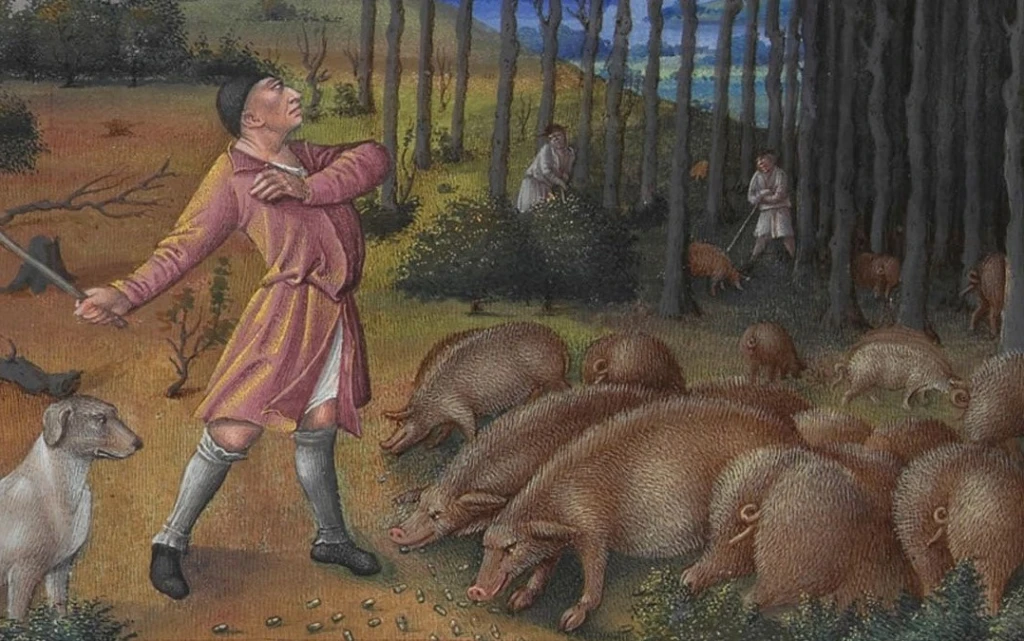
Of course chickens, cats and other animals are difficult to contain and surely they walked around freely by farms, but in a city or town people would try to avoid that.
Not only were there rules and laws about this sort of thing, it is also common sense.
If you let chickens go their own way they choose places to lay their eggs and you’d have to go looking all over town to find them, on top of that if your chicken decides to lay eggs in a neighbours yard, it might get difficult to convince those neighbours to hand the eggs over.
And with houses that often didn’t have glass in their windows and open doors, you’d run the risk of animals walking into your home and well, making a mess, if you know what I mean.
Would you want that?
Whereas great injuries and dangers so often have happened before this time in the City of Norwich and still happen from day to day in as much as boars, sows and pigs before this time have gone and still go vagrant by day and night without a keeper in the said town, whereby divers persons and children have been hurt by boars, children killed and eaten, and others [when] buried exhumed, and others maimed, and many persons of the said town have received great injuries as wrecking of houses, destruction of gardens of divers persons by such kind of pigs upon which great complaint is often brought before the said Bailiffs and Community imploring them for remedy on the misfortunes, dangers and injuries which have been done to them.
Norwich Book of Customs entry, 1354
As we can see in some places they did cause havoc but it also shows why this was such a stupid situation people tried to fix.
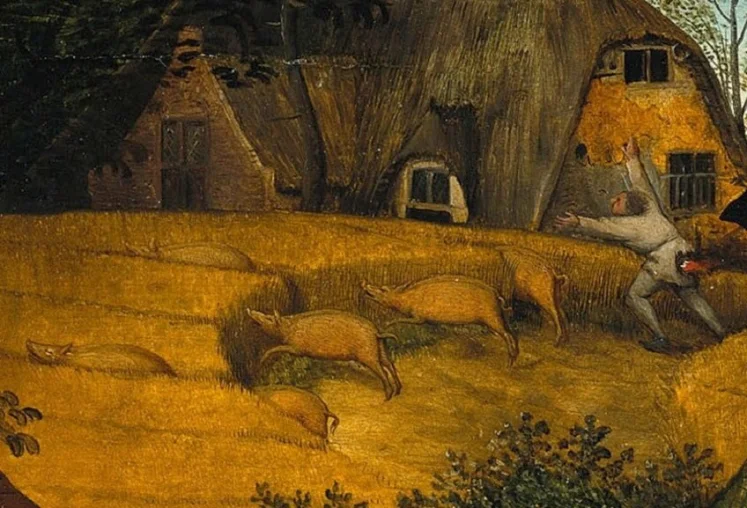
From the painting ‘Nethttps://en.wikipedia.org/wiki/Netherlandish_Proverbsherlandish Proverbs‘ by Pieter Bruegel the Elder
Many Medieval towns, villages and cities had strict rules and laws about animals causing trouble, not only were people allowed to kill animals who were unaccompanied by a keeper but there were also fines for the owner.
Medieval people didn’t like any of this, they wanted clean and safe streets but the Medieval world included a lot of animals that often had to go through towns and cities on their way to market, to the butcher etc. And although animals were often kept outside cities, there were also people who kept them inside city walls, they were easy and relatively cheap animals to keep and for most of the middle ages cities and towns had an agricultural character, people had yards by their homes, something that became rarer when cities became overpopulated near the end of the middle ages.
So there were a lot of very strict rules about pigs in urban situations, entire parts of towns were pig-free zones, if pigs were allowed out of their pens it was only during specific times and with a keeper or just banned from streets all together.
But in other towns pigs were allowed to go wherever they pleased as long as they had a bell around their neck. As with most subjects it’s impossible to make a claim about this sort of thing that suits the entire 1000 year lasting middle ages and every corner of Europe.
But the myth I am trying to add a bit of nuance to is that the medieval streets are being depicted as a crazy zoo, as is often the case in films and television shows, animals everywhere, all adding to the filth and waste, and people being fine with it.
People didn’t like it, people tried to do something about it and this kind of chaos was not that common.
Sources;
- Running Amuck? Urban Swine Management in Late Medieval England by Dolly Jørgensen
- Pigs and Pollards: Medieval Insights for UK Wood Pasture Restoration by Dolly Jørgensen
- Proverbial Pigs in the Middle Ages: Ten Medieval Proverbs Featuring Swine
- De mythe van de vuilnisbelt, by Henk ‘t Jong
- The path to pistoia: urban hygiene before the black death
- Urban Bodies: Communal Health in Late Medieval English Towns and Cities’ by Carole Rawcliffe
Empty chamber pot from window
This did happen but not really in Medieval times.
Of course I am not saying it never happened, but many people have this idea of Medieval cities having this problem and that it was so common that people would shout “gardyloo” (Gardez à l’eau, look at the water) as a sort of warning.
Again this is one of those things that really was a thing but at the very end of the Medieval era and after that.
Till the Renaissance most cities and towns were not yet that overpopulated and often had an agricultural character, with other words most houses had a garden or yard, an outhouse in the back, etc.
There was no reason to empty a chamber pot out of your window.
Why would you risk a fine or being stabbed in the face by whoever happened to be walking underneath your window if you could just as easily dump it on your compost heap at the end of your garden or save it and then sell it, as it had some value.
At this time most houses didn’t even have an second floor which would also make this a bit difficult.
When the cities and towns started growing and getting overcrowded things went wrong.
This is when people started building taller houses but also the space in these areas became so valuable that gardens and yards started getting smaller and disappearing.
Also in towns and cities you no longer really needed a garden because there were shops and markets where you could buy the herbs and vegetables you grew there, trade became a bigger part of daily life than it had been before.
But this also meant more people lived in small areas while they no longer had space to put an outhouse, their own well, or where to dump their waste.
And with taller houses it also meant that in many cases the people at the ground floor perhaps still had a garden or yard but the people living on the top floors couldn’t use it.
You can imagine that when you suddenly have to carry your waste to a special dumping area or wait for it to be collected, the temptation to throw it somewhere where you were not supposed to started to become very tempting.
As always in history; overpopulation causes trouble.
Medieval records show people complaining and getting very angry with neighbours who made a mess or caused discomfort.
Fines in 14th century London could be levied against anyone living near the place where filth was found, so if you saw your neighbour dumping waste in the street you know you’d be at risk of a fine as well.
Other examples show that someone caught merely urinating in the street was almost beaten up by locals for doing something so filthy and a man who threw just a fish skin on the street caused the owner of the house to be fined for it who then got so angry he beat up the litterer.
If anything, old records seem to suggest that Medieval Europeans tried really hard to keep cities and towns clean and most examples of people getting really rather filthy come from later.
This wonderful illustration is from 1555 for instance;
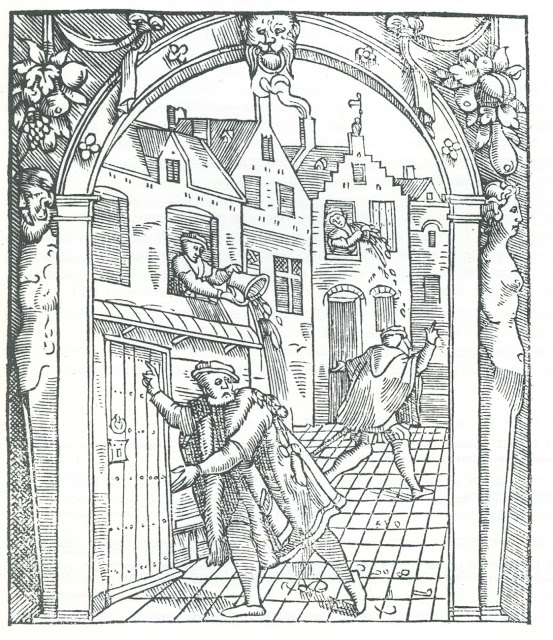
At about the same era, the 16th century (so technically just after what we generally consider to be the Medieval Era) we see several new laws popping up regarding the handling of waste in Belgium.
Including a very specific law stating that windows overlooking a neighbour’s yard or garden needed bars so a ‘piss pot’ could not be emptied out of this window.
It seems that although this had happened before, it did become a serious problem at the end and after the Medieval era.
And even then foreign visitors praised the low countries for it cleanliness and neatness.
So even when it was something that needed specific laws, it still was not something that, at least in Antwerp, seems to have turned the streets into one massive cesspit.
Of course things often went wrong and there were plenty of accidents and incidents where indeed people ended up complaining about a filthy stench or waste everywhere.
But the idea that this was not just common but actual daily life for all of Medieval Europe all the time is the myth.
In this era people connected smell with health, bad air was assumed to be unhealthy.
So besides just not liking bad smells our ancestors had an extra reason to want to try and fight unhygienic situations.
They were not this different from us; they did not enjoy living in filthy, smelly and dirty looking towns and fought hard to try and avoid/fix this when it happened.
This is one of the few images that shows someone emptying what could be a chamberpot from a window which is often used as an illustration of this bad habit.
But it was published at the very end of the Medieval era and the emptying is clearly not done out of laziness or habit but as a subtle way to show ones opinion of the musicians making a racket late at night.
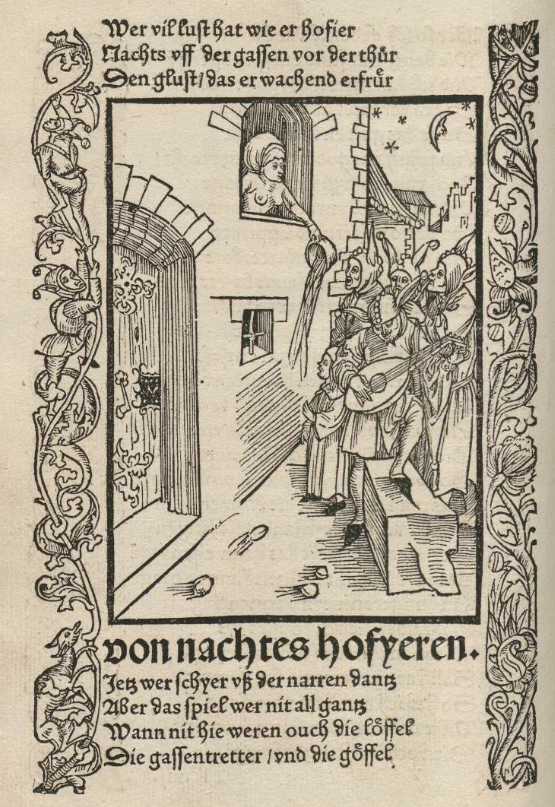
From Sebastian Brant’s ‘Das Narrenschiff’ (Ship of Fools), Basel ca. 1497
In short; there have always been dirty naughty lazy people who dumped their waste out of windows but in much of Medieval Europe this seems to have been a rare crime that both law enforcers and neighbours would react harshly to, just like today really.
The waste was mostly dumped in ones own yard, given to a collector or taken to a communal dump or special river, stream or gutter meant just for this purpose that would have flowing water in it and thus not cause much of a stink, unless it got clogged and well, that would be horrible.
When cities became overpopulated, this relatively well functioning system sometimes stopped working as it should and although these problems were often fixed, they became more frequent.

Map of water supplies in and out of the Christchurch abbey in Canterbury from the 1160s.
With springs, holding tanks, water being piped through to basins, kitchens and toilets
Sources;
- The Medieval Sense of Smell, Stench and Sanitation, by Dolly Jørgensen
- The ‘Great Sanitary Awakening’ Questioned: Is There a Solid Argument in Favour of the ‘Filthy Medieval City’ Hypothesis? by R. M. R. van Oosten
- Sanitation, Latrines and Intestinal Parasites in Past Populations, edited by Piers D. Mitchell
- Life in Medieval Europe: Fact and Fiction, by Danièle Cybulskie
- City Sanitation Regulations in the Coventry Mayor’s Proclamation of 1421
- Das Narrenschiff (1494) by Sebastian Brant (scanned original in German
- Ship of fools (1494) by Sebastian Brant (in old English)
- The Stench of Disease: Public Health and the Environment in Late-Medieval English towns and cities, by N. J. Ciecieznski
- Waste management and attitudes towards cleanliness in medieval central Europe, by Filip Havlíček, Adéla Pokorná and Jakub Zálešák
- Wildevrouw
- How Did People in the Middle Ages Get Rid of Human Waste?, by Tim O’Neill
- Today I found out
- De mythe van de vuilnisbelt, by Henk ‘t Jong
- Wasser, öffentliche Hygiene und Brandschutz: Zum Problem des Managements lebensstandardrelevanter Kollektivgüter in der mittelalterlichen Stadt by Ulf Christian Ewert
Common people never wash
Medieval people cared a lot about hygiene and washed, often daily, yes even the poor.
Because some sources tell us people rarely took a bath we assume they didn’t wash, but having a bath isn’t the same as having a wash.
You may think that having a bath would involve filling a big tub with hot water, which often meant boiling water over an open fire, carrying it in buckets to a massive wooden tub, sometimes lining it with fabric (perhaps against splinters although likely more just for comfort as coopers could make very nice tubs with no splinter risk), adding herbs, soap, etc, and that this it took a lot of time and effort and thus was something that wasn’t as easy as it is today.
And yes, this would be work you’d have to do if you wanted a big tub in a room in a big house, that would indeed be a lot of effort for you or your servants, as having a bath in your room would be quite a luxury.
However getting a smaller amount of hot water was a lot easier, you don’t need a lot of hot water to warm the content of a bucket, bowl or sitz/hip bath, a small tub you could sit in but not completely submerse yourself in.

Li livres qui doit iestre apielés la flours et la rose de toute medicine de fisique, Aldebrandins de Sciane, 1275-1300AD.
If you want to put it in perspective it’s the difference between using a big fancy jacuzzi or even a comfortable long regular bath we have at home today and he zinc tub our grandparents bathed in which were smaller & needed less water, but were perfectly suitable for cleaning yourself in.
Yes, burning wood to heat water would also be a lot of effort and use up a valuable good like firewood but a fire was already burning for much of the day in almost every household, people needed it for warmth, light and food.
To heat water you could simply place a earth-ware jug or metal cauldron next to or over the fire or you could place rocks in the fireplace, heat them up and then place them in water, the latter will get you hot water in almost seconds as this video shows.
So yes, a big fancy bath was a luxury but washing yourself with water from a basin or bucket or bathing in a hip bath or jumping in a pond or river was available to everyone.
On top of that bath houses were also common and very popular.
People cared about hygiene, even peasants and farmers.
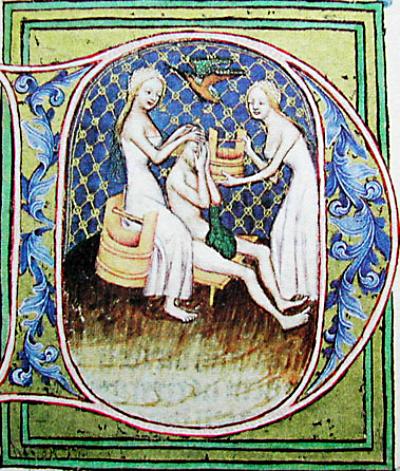
They were advised to change their underwear daily and pretty much every household account book is full of payments to washerwomen.
Besides the washing from a basin there was of course almost always access to clean water because cities, towns and villages were in most cases built near a stream, river or lake, but there were also a lot of bath houses, they were extremely popular and much used.
And of course there had been Jews in Europe since Roman times who bathed quite regularly as part of their religion.
- 13th century London had 13 bathing establishments.
- 14th century Augsburg had 17 bathing establishments.
- 14th century Vienna had 29 bathing establishments.
- 13th century Paris had 32 bathing establishments.
- 15th century Nürnberg had 14 bathing establishments.
(it is not always clear what kind of establishments were meant but they probably didn’t count the simple taverns, small bath houses, private houses where people could also have a bath, it’s likely that these were specific, large bath houses)
Although of course indoor plumbing was uncommon in Medieval Europe, it also wasn’t unheard of.
Many palaces, monasteries, abbeys and even rich houses had running water and ways for waste to leave the building.
In Britain the The Worshipful Company of Plumbers was founded in the 14th century and much of their work involved installing, repairing and maintaining conduit pipes.
Dublin, Bristol, Exeter, Bruges, Liège, London, Bath, Coventry, Gloucester, Lincoln, Newcastle, Stamford, Southampton, Dartmouth, Frome, Lichfield, Liskeard, Ludlow, Petworth, Richmond, Totnes, Well, Salzburg, Basel, Regensburg, Lübeck, Breslau, Freiburg im Breisgau, Bern, Nuremberg, Frankfurt am Main, Augsburg, Ulm, Zurich, Munich, Meran, Innsbruck and other places all had networks of tunnels and pipes transporting and bringing fresh water into the city or town.
Those who could afford could request extra pipes to be connected to their home or place of work, such as brewers, cooks, fishmongers, etc.
When Henry VI processed through Cheapside in 1432 on his return from France, the Conduit was used to provide free wine to the masses, people could fill their jugs from public fountains across London.
With all its failings at least that is one bit of Medieval plumbing that’s probably impossible to do with our modern water supply systems 😉
You can find a list I’ve been making of towns/cities/villages in medieval Europe that had water piped in, made use of canals, conduits, aqueducts by clicking here.
Elsewhere in Europe people also had water supplied to cities, towns and private houses, but without slavery and the massive production & international trade the Roman empire had, if they couldn’t have fancy stone sewers and aqueducts they made their water pipes out of wood, we don’t know how common they were as they of course didn’t last as long and were rarely seen as something valuable or important when dug up centuries later, but now and then traces of them are found.
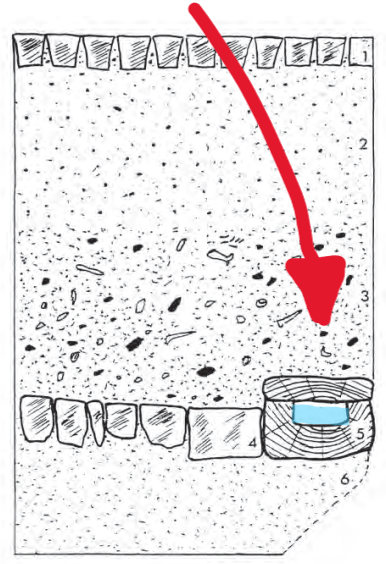
The Medieval soap industry was huge in Medieval Europe and soon needed guilds for those involved in the trade and production, Naples had a soap maker’s guild since the 6th century, France had them a century later.
Soap making was done by men and women, often well trained, but soap had been used in Europe for thousands of years.
The Gauls, Celts and Germanic Tribes are all known to have manufactured and used soap since before the Roman era.
The Romans didn’t really use soap till then, they used oils to clean their bodies with.
But they appear to have been very impressed with the soap they found when they conquered Western Europe, especially German soap was seen as the best according to Aelius Galenus (AKA Claudius Galenus, Galen or Galen of Pergamon), a Greek physician, surgeon and philosopher in the Roman Empire (129 AD – c. 200/c. 216) although some historians argue that the sources of these claims were perhaps not by Galenus.
But Pliny, Caesar, Cornelius Tacitus and Aretaeus of Cappadocia also wrote about European tribes using soap, bathing & generally caring about their hygiene.
- Pliny wrote before 77AD: “Soap too, is very useful for this purpose, an invention of the Gauls for giving a reddish tint to the hair. This substance is prepared from tallow and ashes, the best ashes for the purpose being those of the beech and yoke-elm: there are two kinds of it, the hard soap and the liquid, both of them much used by the people of Germany, the men, in particular, more than the women.” (source)
- Julius Caesar wrote in 58–49 BC: “they bathe promiscuously in the rivers”), Cornelius Tacitus (98 AD: “They wash themselves oftentimes with warm water” (source)
- Cornelius Tacitus wrote around 98AD: “As soon as they wake up usually late They wash themselves oftentimes with warm water Like those accustomed to a prolonged winter.” (source)
- Aretaeus of Cappadocia wrote around 2nd century AD: “the Celts, which are men called Gauls, those alkaline substances made into balls, with which they cleanse their clothes, called soap, with which it is a very excellent thing to cleanse the body in the bath. (source)
Romans started transporting the soap they found in Europe all over the empire, considering Germanic soap the best there was.
Either way it was considered to be of uniquely high-quality by scholars in Egypt, Rome, and Palestine.
Some sources suggest that the Western Tribes used soap for their hair and the Romans liked it as a hair product as well, it’s not sure if this is the only use it had, I find that hard to believe as soap as it was made then worked just as it did later and they wouldn’t have been able to ignore the fact that even if they only used it in their hair it also removed grease and dirt from their body.
It is also interesting that Pliny mentioned there to be both liquid and hard soap, which also suggests different uses.
The Romans also mention that Gauls used it to make their hair red but this too suggests to me that a few products & uses of soap were misunderstood or mixed up, after all, I don’t think some simple ash, tallow & water has much of a colouring effect on hair.
I think the idea of soap being just a hair product may be some sort of misunderstanding on the Roman’s side, but we can’t prove that of course.
When researching the history of soap it won’t always be easy to figure out if historical sources are talking about soap for the body, hair, fabric, medical use or perhaps even just the floor.
Another complication is that many of these very old sources have been lost and we have to rely on much later translations that are not always exact.
For instance, Zosimos of Panopolis described both soap and the process of soap making in circa 300AD, but most of his work we can find appear to be later translations, compilations, etc. which mean we can’t be 100% sure Zosimos wrote those things himself.
However, hair product or not, we know people were using soap on their bodies in the 4th century when Theodorus Priscianus described French soap as something you washed your head with.
When the ‘Moors’ invaded Spain and trade and contact between Arab and European people became more intense Western Europeans may have been introduced to new types of hard soap of a higher quality.
In the very south of Europe and even more so in the Middle East and Northern Africa people used ingredients like olive oil and nice smelling herbs and it soon became more popular than local soap.
At first soap like this was more expensive because of transport and ingredients but quite quickly Europeans started importing the oil and made their own soap.
Some people claim that Europeans didn’t bathe or wash or knew about soap before the Moors brought these to Europe, this is of course nonsense.
When the Moors entered Europe they found cities with popular bath houses and there were several soap making guilds, which means that industry was not small.
Washing & bathing was part of daily life and as this article shows it had been for centuries.
By the 8th century soap made with oil in stead of tallow was widely available in many European countries.
But Medieval people knew several relatively easy soap recipes with ingredients and techniques that were available to even common people, after all at it’s most basic soap is nothing but ash (alkaline) & water (makes lye) and tallow (rendered animal fat) if you need to bind it.
It’s even in the bible…
“Then a man who is clean shall gather up the ashes of the heifer, and store them outside the camp in a clean place; and they shall be kept for the congregation of the children of Israel for the water of purification; it is for purifying from sin.”
This soap was a bit harsh but perfectly useable for both laundry and body, just experiment with the recipe so make it more or less harsh.
For really sensitive skin people used plants like Saponaria officinalis, better known as Soapwort, which is native to Europe.
People would grow this in their garden (something most houses would have back then) and there are several recipes on how to use it for your health or as a sort of toilet soap.
Gypsophila (babe’s breath) and Equisetum (horsetail) are also plants native to Europe that have cleaning properties.
The church did have a few objections towards bathing, but not because they thought being dirty was better.
Gregory the Great (c. 540 – 604) recommended Sunday baths but also warned that they shouldn’t become a ‘time-wasting luxury’.
Vanity, sloth, laziness, the idea of people just hanging around in a bath for hours for pleasure was just not something the church approved of.
So the church didn’t object to bathing but to bathing too much, which frankly is something we’re hearing again today.
Of course it was also considered vain and some would give up bathing and other pleasures as a penance.
But that also meant that people may have claimed, even bragged about not washing when they actually were, just to look ‘cool’.
A bit like modern day people bragging about their no-make-up face or sharing a ‘selfie’ of how they look just waking up while they secretly spend a lot of time and products on that look.
Lucas Rem, 16th century tradesman in the German town of Augsburg bathed 127 times within three weeks, according to his diary.
I bet that’s more baths than you had this month.
In some towns you could be fined if you didn’t visit a public bath once a week.
Bath houses were very cheap but for those who couldn’t afford them there were of course still lakes and rivers.
City records tell us that a lot of people drowned while bathing.
In some countries it was also common to pay your employees a clothing, drinking and bathing allowance as well as a salary.
In 14th century Rochsburg we have records of stonemasons receiving 6 pennies a week “Badegeld” (bathing money or bath tokens).
The costs of what you received for that money of course varied per region, era, bath house, what you desired but it also depended on your social status.
If you were poor you paid less, if you were well off you could pay twice as much as a commoner, children also paid less and sometimes you could get a group discount.
Thanks to the Bamberger Baderordnung of 1480 we know some of the prices:
- Schwitzbad (steam bath): Commoner: 1 Heller (half a pfennig) For the Well off: 1 pfennig.
- Wannenbad (immersive bath): 6 pfennig
- Schröpfkopf (cupping therapy): 1 pfennig.
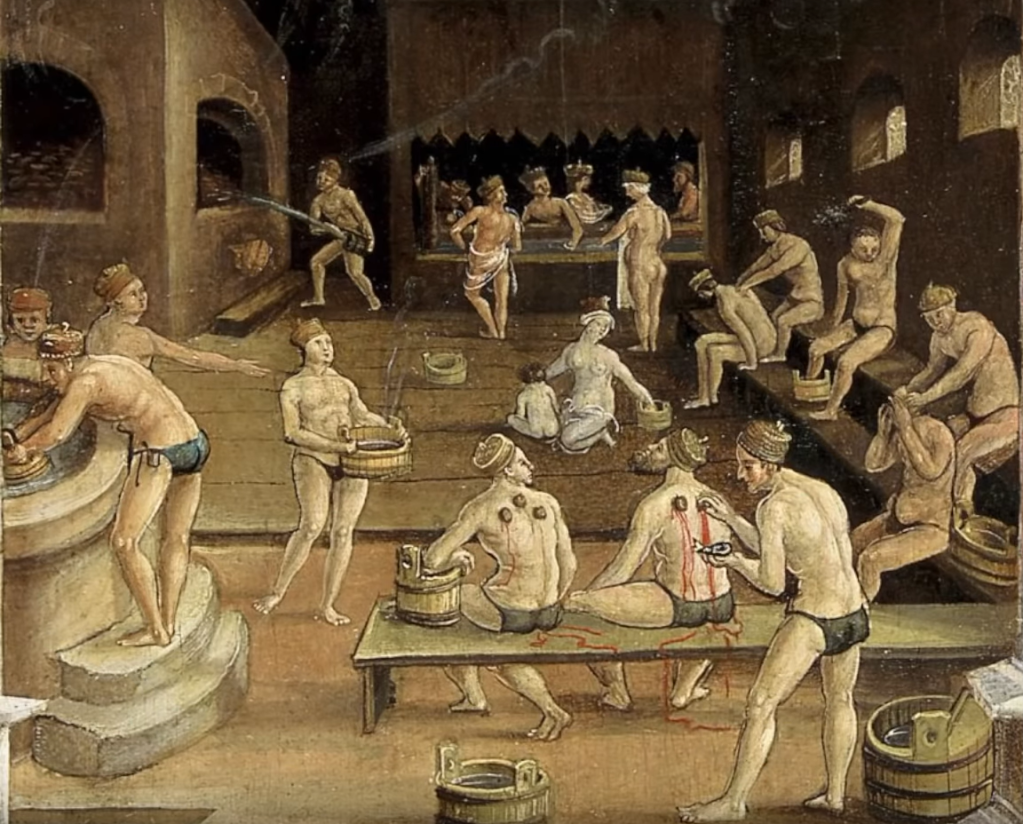
In Bamberg prostitutes and children who still needed breastfeeding were not allowed in the bath houses.
According to the Nabburger Schulmeisterordnung of 1480 schoolchildren should have a bath on Wednesday while the adults should bathe on Saturdays, which for many would be the end of the working week and the start of the weekend, there’s some mention of men leaving work early so they can bathe before the bath house shuts.
People wanted to bathe, they loved it, it was social, work done, off to the bath house for a clean and a chat, then perhaps onwards to the pub?
In some towns arrangements were made for the poor to bathe for free on certain days, sponsored by the rich, the church, etc.
A visit to a German bath house back then would have looked something like this:
In early Medieval Ireland offering your guest a bath was basic hospitality, not offering a visitor the opportunity to bathe, or at least wash hands and feet, was considered an insult and yes that was not just among the nobility and rich.
“I must go to the public baths; we have two tubs here, but a bath without steam would be no good, and so I must take a steam bath”
Sentence from ‘Le Roman de la Rose’ (1433).
But of course, when men and women get naked and sit in hot water while often having a drink as well, sometimes things can get a little naughty.
We shouldn’t make too much out of that though, this too is often exaggerated, in many regions there were very strict laws about keeping men & women separate during bathing and men trying to sneak into the women’s baths could risk severe punishment.
Bath houses were an important place of social gathering for communities and neighbourhoods, people went there together with their entire family, there’d be grandparents, parents, children and babies, you’d meet your neighbours there.
So not really a good place for having a cheeky encounter with a prostitute.
Many bath houses didn’t allow prostitutes to even enter the building.
But some brothels also offered bathing options and of course naughty things happened in some bath houses, which was another reason the church started objecting to these places of debauchery, they didn’t ban them but they sometimes started their own bath houses, to keep people from bathing and sinning at the same time.
Of course the church didn’t object to people being clean, washing & bathing is a big part of that religion, Mary bathed Jesus, Jesus washed the feet of the poor, saints bathed the sick, etc.
On top of that the plagues that became a returning horror in the late Medieval era also damaged the popularity of these places.
With highly contagious diseases going around killing millions, people started to avoid bath houses, after all when you thought you could get sick from a touch or even breathing the same air, you really don’t want to get in a tub with some strangers or visit other busy public places.
The famous Dutch philosopher Erasmus wrote in 1526;
” Twenty-five years ago, nothing was more fashionable in Brabant than the public baths. Today there are none… the new plague has taught us to avoid them. “
At this time the hygiene focus among some people shifted from washing your body to washing your clothes.
People thought that water, especially hot water, would open your pores, which is not nice during pandemics.
So they started bathing/washing less frequently and put more effort into changing their underclothing more regularly and washing those, a lot.
This too though does not mean people stopped washing completely though!
They started their day by rubbing themselves with a clean cloth and using cold water, which not only still makes you clean, it also makes you tough and manly, at least according to my grandad.
This also explains why people mentioned they didn’t bathe very often, when they spoke of bathing they meant a full immersion dip in a bath of hot water, a luxury and frowned upon, so something one shouldn’t do in public with lots of other people, like they used to in medieval & Roman times.
Sadly people misunderstanding the decline of the bath house culture and reading about how people bathed less has led to people assuming everybody was filthy and never washed and somehow this idea then was projected onto the middle ages in stead of the Renaissance.
A few centuries later a tax on soap was introduced in England in 1712, this of course increased the price of soap immensely, making it a luxury.
That is why when the Medieval era ended and the Renaissance began, the state of hygiene started going downhill in many cities.
It would take a while before bathing & washing became a common occurrence again.
Also, it is quite interesting that people seem to think that at this time cultures outside Europe were somehow cleaner and more hygienic.
This is generally based on (rarely unbiased) observations from travellers but also because people with strict, often religious hygiene practises like the Wuḍū in Islam and the netilat yadayim in Judaism, which generally involves the washing of hands.
These still play a big role in these (and other religions) but not so much in “The West” where religion has stopped playing an important part in the lives of many people.
But in Christianity there are also many ritual hygiene rules & habits.
The Black Death pandemic originated in Asia and was also killing countless people in the Middle East and Africa, it was not just a thing in Europe, hence it being a pandemic, not an epidemic.
But even in Europe several cities managed to avoid the plague and some areas were less affected than others even though there is nothing that suggests that hygiene circumstances were remotely different in those places.
The Black Death was came originally from the fleas on rodents but when it jumped to humans and their fleas they may have become the main spreader.
Some historians have the theory that fleas & rats don’t travel as fast as the Plague did, so it had to be people who were to blame for escorting Death along the Silk Route, on horseback, on sailing ships, from town to town.
The places that were spared just got lucky, were not along a trade route, were remote, didn’t get many visitors, etc.
But all of this is still hotly debated by historians, some also say the plague may have become airborne, sadly there simply isn’t enough data to come to definitive conclusions on how the Black Death actually spread, yet.
But currently it seems that it was isolation what saved people, not washing more.
If hygiene played a essential role on the spread of the Black Death we would have seen dramatic changes in deaths among different cultures, religions, regions.
Of course all communities, especially large ones, have areas and certain inhabitants that are not as clean as the rest.
Streets where butchers or tanners worked, the neighbourhood where the poor lived, etc, could have had extra unhygienic situations when the strict rules and laws were ignored and when they had not (yet) been forced to do their work outside the city walls.
Judging an 1000 years era in a region so large as Europe based on extreme situations in some streets in some cities is of course ridiculous, after all, there are still modern advanced cities to this very day that have certain areas that can be called disgusting.
However till the very end of the Medieval era and the beginning of the Renaissance most Medieval cities just were not that large and still had a strong agricultural character.
With other words most houses still had a plot of land with room for an outhouse, cesspit and often even a well, although in many cases this was just a hole in the ground.
Of course this also means that even though Medieval people were clean and washed regularly, their way of life still attracted vermin, after all in a way most of them still lived on farms even if they weren’t farmers.
A house with a garden, a cesspit, some animals, would always be an attractive place to visit for all sorts of animals and bugs.
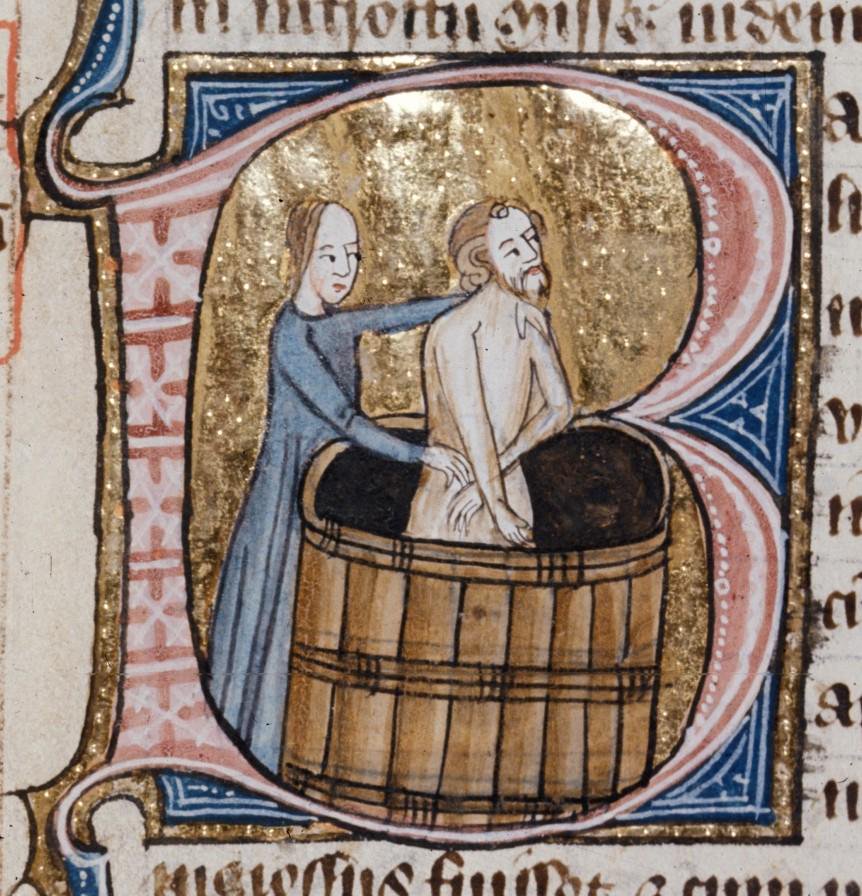
Caring about hygiene was also not something Europeans were taught later by interaction with other cultures, they’d been obsessed by it since before Roman times.
Of course, as always, interaction with other cultures taught them new things and introduced them to other , sometimes better ways.
On the other hand foreigners visiting a new part of the world would almost always have trouble understanding the local habits and would often consider certain traditions barbaric or dirty even when perhaps they were just different.
After all humans had a habit of judging other cultures and their habits based on their own without bothering to try and truly understand the way others do things.
Even today in some parts of the world some people shower in the morning and before going to bed, which seems totally over the top to many others.
And when some considered the Vikings to be very clean because they spend a lot of time on their appearance, others considered them rather filthy for an entire household sharing the same bowl while washing.
Always be critical of the sources for such stories.
A Priest called the Vikings too clean, a Muslim called them dirty, these were both outsiders who could perhaps not be considered totally unbiased.
Vikings themselves have stories about bathing, left behind lots of hygiene products, etc.
If you truly want to understand a cultures hygiene habits, look at their own sources if you can, not (just) what outsiders said about them.
Interesting quote;
“When you get up in the morning, stretch your limbs, so that the natural heat is stimulated. Then comb your hair because this removes dirt and comforts the brain. Wash your face with cold water to give your skin a good colour and to stimulate the natural heat.Clear your nose and your chest by coughing, and clean your teeth and gums with the bark of some scented tree.”
Taddeo Alderotti, ‘On the Preservation of Health’, 13th century.
Another interesting quote;
“At early dawn, when first from bed you rise, Wash, in cold water, both your hands and eyes.
With comb and brush then cleanse your teeth and hair, And thus refreshed, your limbs outstretch with care.
Such things restore the weary, o’ertasked brain.
And to all parts ensure a wholesome gain.”
From the Regimen sanitatis Salernitanum, 12th/13th century AD.
One of the oldest fresh and wastewater systems (and even a possible indoor toilet) ever found appears to have been built into several houses in Skara Brae just of the Scottish coast, a Neolithic settlement from around 3000 BCE.
Some of the houses even had “cell-like enclaves” which may have functioned as indoor toilets.
On a side note, although the Chinese already used toilet paper they didn’t use water to clean themselves after a toilet visit which Europeans might have done, after cleaning with a scraper, moss or straw, unfortunately this was not a subject people wanted to record long detailed historical records about back then so we have to mostly guess.
We do have one source though, in the Book of Nurture , written by John Russell, usher to the duke of Gloucester, in the 14th century, was written;
Se þe privehouse for esement be fayre, soote, & clene
& þat þe bordes þer vppoñ / be keuered withe clothe feyre & grene,
& þe hoole / hym self, looke þer no borde be sene,
þeroñ a feire quoschyñ / þe ordoure no mañ to tene
looke þer be blanket / cotyñ / or lynyñ to wipe þe neþur ende
and euer wheñ he clepithe, wayte redy & entende,
basoun and ewere, & oñ your shuldur a towelle, my frende
In þis wise worship shalle ye wyñ / where þat euer ye wende
Translation;
Keep the Privy sweet and clean,
cover the boards with green cloth,
so that no wood shows at the hole;
put a cushion there,
and have some blanket, cotton,
or linen to wipe on;
have a basin, jug, and towel ready,
for your lord to wash when he leaves the privy.
So at least the fancy folk seem to have used blanket, cotton or linen to wipe themselves with.
And note, that they were clearly expected to wash after going to the toilet.
With other words, Europeans, just like people everywhere else, seems to have cared about washing themselves for pretty much all of history.
Things did go wrong of course but generally new laws and stricter control solved these issues, it wasn’t till the end of the Medieval era that it started to go wrong at a larger scale.
Cities became overpopulated and overcrowded, houses lost their little plots of land and with that lost their personal cesspits, outhouses, wells, etc.
Where- and whenever large groups of people live in a small area hygiene always suffers and the problems became larger and sometimes impossible to solve.
We know that many Medieval people were infested with roundworm and tapeworm, fleas and lice.
No matter how much they washed, combed and cleaned, living in densely occupied communities with a lot of trade traffic and surrounded by animals, in houses that no matter how much they tried could not be kept vermin and bug free, meant that the situation got worse and worse and eventually perfect for the fleas and lice that carried the Bubonic Plague and the animals (and people) they travelled on.
Nevertheless most of the stories we know about disgusting, filthy cities date from after the Medieval era when cities became truly overpopulated.
So what did Medieval people smell like?
Smoke.
Regardless of them washing every day, using perfume, soap or never washing at all, they and much of their world generally smelled of smoke.
Every house and most rooms had an open fire blazing away almost all the time, this is how people kept warm but also made sure they always had some warm water.
They sat around it, women slaved over it.
I have done this, I’ve lived the live of a Medieval woman in an reconstructed 14th century house in an Archaeological park and from my own experience I can tell you that my woollen clothes, linen undergarments, head cover, stockings and hair were all impregnated with the smell of smoke and it overpowered pretty much any other smell, even after days of cooking on hot fires during a heatwave, wearing 2 layers of clothing and no washing.
Linen is amazing, it absorbs and even diminishes bodily odours, it has a anti-bacterial quality which is especially good at dealing with sweat.
Even if you just rub yourself clean with a washed linen rag, you’ll notice a difference.
But even if a medieval person felt they smelled like sweat and wanted to do something about it or even prevent it, they could use deodorant, well sort of.
They could use a rock of alum, simply wet it and rub, you can try it yourself, it’s a natural, perfume-free deodorant.
Alum was a popular ingredient, also used in soap.
Roman writer Pliny wrote about Alum as a deodorant, so did the Greek Criton of Heraclea.
To be fair though, it was quite a rare & expensive object for much of history, it wasn’t till the trade & exploitation picked up and spread across Europe where it was also used in several industries, that it became more easily available.
Another type of deodorant could be made from hyssop & bay leaf, or cloth dipped in wine made with boiled bilberry (blueberry), according to Hildegard of Bingen.
And according to some historians Abu l-Hasan ‘Ali Ibn Nafi’, better known as Ziryab, introduced a sort of deodorant in Al-Andalus, the Iberian Peninsula under Moorish rule, in the 9th century.
And although not medieval, the 16th century ‘On the Ornaments of Women’ by M. Giovanni Marinello mentions recipes that stop arm pit smells, which likely existed before he wrote them down.
So people did care about sweat smells and were trying to combat it in medieval Europe and earlier.
A little side myth; Most Medieval people married in summer because that is when they took their yearly bath and carried a wedding bouquet to mask the smell of the bride when the bath had not been very recent.
As stated above we know people washed, bathed, used soap.
Especially on occasions that supposedly would end with two people sharing a bed together, people would have a bit of a wash.
Part of the myth is that this is why summer weddings were so popular; lots of flowers.
But in Medieval England for instance, in rural communities, winter weddings were much more popular which makes sense because there was less work to do on the land and there would be fresh meat for the party.
Flowers were symbolic, nothing more, nothing less.
Besides have you actually tried this?
Stop washing for a few days or weeks and then go chat with your friends while carrying a bouquet of flowers.
Do you really think a few flowers will mask that smell?
Finally, although technically the story about Elizabeth I not bathing very much has nothing to do with the Middle Ages, I still researched it and if you want to read more about her and what was claimed about her you can read it by clicking here.
Sources;
- ‘Baths of Bliss in the Middle Ages: Fact and Fiction’ lecture by Professor Elizabeth Archibald
- Going Medieval
- TodayIfoundout
- Life in Medieval Europe: Fact and Fiction
- Time Traveller’s Guide to Medieval England
- Aeon
- Yes, People in the Dark Ages Bathed, by Kim Rendfeld
- Cleaning and sanitation: a global history, by Giulio Guizzi
- Ancient History
- Medieval Soap making
- Toilet guru
- Medievalist
- Roger Pearse
- Aeon
- ThoughtCo. on weddings
- Planet Wedding: A Nuptialpedia
- Book of Nurture
- Regimen sanitatis Salernitanum
- Health, Grooming, and Medicine in the Viking Age
- Love and marriage in medieval England
- De Bello Gallico, by Julius Caesar (58–49 BC)
- Neues aus der Gotik
- Exeter plumbers
- Sanitation, Baths, and Street-Cleaning in the Middle Ages and Renaissance, by Lynn Thorndike
- Naturalis Historia, by Pliny the Elder
- De origine et situ Germanorum by Tacitus
- A history of Greek fire and gunpowder
- Water supply of the late Medieval and earl modern town in the Polish lands by Urszula Sowina.
- The Book of the Civilised Man: An English Translation of the Urbanus magnus of Daniel of Beccles
- Trotula de Ruggiero’s 11th century treatice, De Ornatu Mulierum
- Water Technology in the Middle Ages: Cities, Monasteries, and Waterworks after the Roman Empire, by Roberta J. Magnusson
- On the Causes, Symptoms and Cure of Acute and Chronic Diseases, by Aretaeus of Cappadocia
- De Methodo Medendi, by Galen.
- A Tale of Three Thirsty Cities by Jaime-Chaim Shulman
- How To Be a Tudor: A Dawn-to-Dusk Guide to Tudor Life, by Ruth Goodman
- The Ties that Bound: Peasant Families in Medieval England by Barbara Hanawalt
- London, A Fourteenth-Century City and its People, by Kathryn Warner.
- A most copious and exact compendium of sope, by Susan Verberg
- Deutsches badewesen in vergangenen tagen, by Alfred Martin
- Im Städtischen Bad vor 500 jahren, by Robert Büchner
- Binnenstruktur und öffentliche räume in der mittelalterlichen stadtwüstung Nienover by Hans-Georg Stephan
- Het middeleeuwse openbare badhuis, by Fabiola van Dam
- The once and future sex, by Eleanor Janega
- Baden und badewesen im Mittelalter, by Susanne Arnold
- Von der Badstube zum Badekabinett. Badekultur im Mittelalter und in der frühen Neuzeit, by Daniela Rösing
- Scrub-a-Dub in a Medieval Tub, by Magdalena Łanuszka
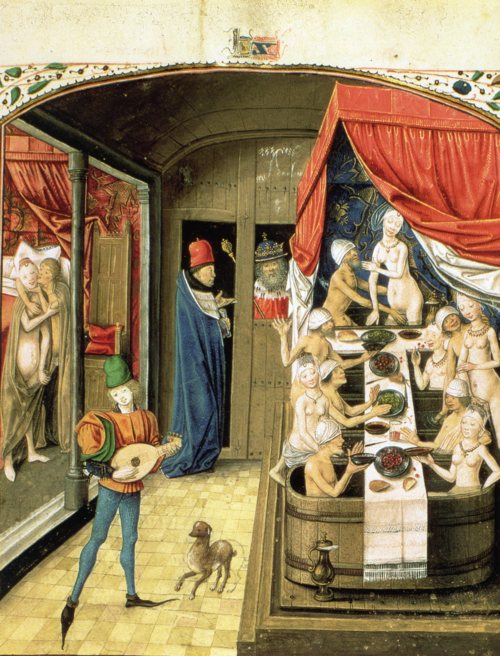
Everyone was short
Archaeological finds show us that the skeletons of our Medieval ancestors were not much shorter than our grandparents were during the 1930s.
Which roughly is about 10cm shorter than we are today.
Small doors in castles, small beds and children’s suits of armours made us think people were tiny back then but of course we also think that if we’re taller than our grandparents the further we go back in time the shorter people were.
But the small doors had other reasons, people often slept half sitting in beds and how tall we are depends on how well we live, not the era we live in.
Dirty, muddy streets
Although of course many villages and towns had dirt roads that would get muddy when it rained, paved streets were also common and there also often were gutters to help rain drain away.
On top of that many towns had strict rules regarding what people were allowed to do and not to do with the bit in front of their homes.
Not keeping it clean, throwing rubbish outside your front door, etc, could get you a nasty fine.
- Communal Health in Late Medieval English Towns and Cities’ by Carole Rawcliffe
- De mythe van de vuilnisbelt, by Henk ‘t Jong
Earth is flat
There is no evidence that suggests that the belief that the earth was flat was very common in medieval times.
Of course there were some people who did believe this, but as far as I know we have very little evidence of people thinking the world was flat back then, there’s more evidence of people believing that today.
One of the reasons people may think this was common during the middle ages is because if ‘Topographia Christiana‘, an 6th century essay written by traveller & later hermit Cosmas Indicopleustes who claimed the earth was flat and who spend quite a bit of ink on explaining that lots of other people are wrong.
Indicopleustes was already an exception in thinking this when he wrote the essay, I don’t know of anyone else defending the flat earth theory during the Middle Ages.
Another rare source showing someone thinking the earth didn’t have the shape it has comes from Copernicus his book ‘De revolutionibus orbium coelestium‘ of 1543 where he describes Lactantius as someone who “Speaks quite childishly about the Earth’s shape, when he mocks those who declared that the Earth has the form of a globe”.
So we do have one source that shows someone who doubted the world being a globe and he is rightly ridiculed for this opinion.
Opposite that we have several sources showing that people knew the earth was round and that it wasn’t considered some sort of controversial statement either.
Of course the ancient Greeks already knew the earth was spherical since the 5th century BC and Medieval scholars agreed and were supporting this idea at least since the seventh century.
Thomas Aquinas wrote in his Summa Theologiae (written in the 13th century);
“The physicist proves the Earth to be round by one means, the astronomer by another: for the latter proves this by means of mathematics, e. g. by the shapes of eclipses, or something of the sort; while the former proves it by means of physics, e. g. by the movement of heavy bodies towards the center.”
And of course Dante Alighieri wrote about a spherical earth and even described the shift of gravity when he passed through the centre of the earth and ended up near Jerusalem in his 14th century epic poem ‘Inferno‘.
Victorian anti-religious propaganda and the romantic movement of the era are guilty of misinterpreting a few sources and incorrectly assuming that the tension between the church and science that existed during the Victorian era were even worse in Medieval times.
In Medieval times the church assumed science would only help them understand God and the world he created better so they supported it, of course this attitude later changed a bit when scientists started to make claims that clashed with what the church wanted the truth to be.
In the 720s the well known English monk Bede wrote & taught:
“The reason why the same days are of unequal length is the roundness of the Earth, for not without reason is it called ‘‘the orb of the world’’ on the pages of Holy Scripture and of ordinary literature. It is, in fact, a sphere set in the middle of the whole universe. It is not merely circular like a shield [or] spread out like a wheel, but resembles more a ball, being equally round in all directions.”
In short; there is no evidence that suggests that people generally thought the earth was flat.
Sources;
- The Reckoning of Time, by Faith Wallis
- Medieval Science, Technology, and Medicine: An Encyclopedia By Thomas F. Glick, Steven John Livesey, Faith Wallis
- ThoughtCo article by Robert Wilde
- Article about flat earth by Tim O’Neill
Vikings with horned helmets
There is no evidence whatsoever that suggests that any Viking ever had horns on his helmet.
The end.
Source;
The Invention of the Viking Horned Helmet by Roberta Frank
Nobody drank water
Although Medieval people didn’t knew about bacteria and microbes, they knew that it was not a good idea to drink from dirty looking smelly still standing water with bugs, poo or dead animals floating in it… This was something humans have known since the dawn of time and even if they didn’t it wouldn’t take long for you to learn that lesson the hard way.
I think us modern day people in most developed countries don’t realise how important clean water was to our ancestors because we’re so used to having it pumped into our houses.
Even if we drink something we shouldn’t have and get sick, doctors can usually and relatively easily cure us. But if you made the mistake of dipping your mug in the wrong puddle just a few generations ago it could literally kill you.
So people have been trying to keep their drinking source as clean as possible and away from waste for a very very long time.
And there were more drinking sources than you may think, we all imagine medieval villages to have just one well in the main square that everybody used but that was not all.
Before cities became overpopulated and yards and gardens started disappearing, it was not uncommon in some parts of Medieval Europe for houses, even those of peasants and farmers to have their own water source, sometimes even more than one.
Of course not always the fairytale well you may now be thinking of, sometimes they were little more than a hole in the ground.
For many people getting clean water involved just stepping out the backdoor with a bucket.
In München for instance we know that in the late middle ages over 50% of all houses had their own drinking water supply and this figure possibly doesn’t even include the improvised home made wells many would have had in their gardens.
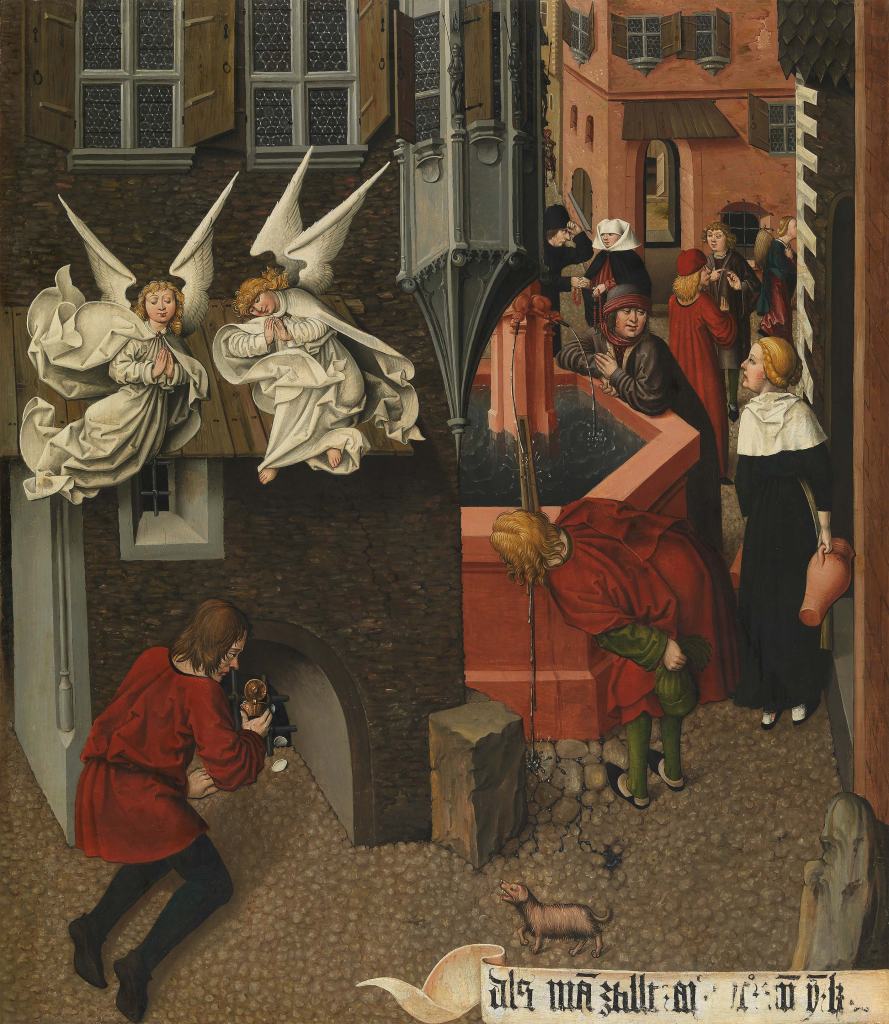
That doesn’t work everywhere of course, but here in the Netherlands digging a hole is sometimes all you need to get to clean drinking water.
People also made sure they were well protected by having laws about not being allowed to let animals near them and appointing someone to keep the area around them clean.
In some towns the punishment for polluting water was being drowned, which tells us something about how important people thought having clean water was.
Industries that polluted , such as tanners, were rarely allowed to do their work near drinking water and when they made a mess they would be heavily fined.
Some cities even had clean drinking water pumped from springs outside the city walls with lead, wooden or ceramic pipes and a conduit but rain water was also collected in cisterns.
We also know that people have been making water safe to drink with settling tanks, sieves, filters and by boiling for a very long time. There are lots of medieval stories that mention people drinking water and monks being so devout they they preferred water over beer.
We know people drank water, lots of it, towns and communities were settled near and round fresh water sources, it was the most important necessity, not just for drinking either.
As the 15th century architect Leon Battista Alberti wrote “Since a city requires a large amount of water not only for drinking, but also for washing, for gardens, tanners and fullers, and drains, and — this is very important — in case of sudden outbreak of fire, the best should be reserved for drinking, and the remainder distributed according to need”.
And the famous monk Bede wrote that King Edwin of Northhumbria had bronze cups placed by springs and streams among busy roads so travellers could have a drink, which would be a rather mean thing to do if everybody thought water was unhealthy.
This whole idea that a village or town didn’t need clean drinking water just makes no sense and is mostly based on people assuming that complaints and records about when things did go wrong were a regular thing and that nobody minded them happening in stead of these situations were exceptions that infuriated people.
Imagine if future historians assume that just because big industry pollutes some lakes and rivers and that there are some places in developed countries today where the water from the tap is polluted that they’ll think this was a common thing in the early 21st century and we were fine with it…
Yes, during the middle ages (and quite a lot of other eras) people did drink a lot of beer, ale and my favourite; mead.
For making ale they generally didn’t boil the water, so the idea that it would be healthier to drink because of the boiling also makes no sense.
Beer or ale brewing by the way also works better with clean water. Even if the water was boiled it perhaps wouldn’t have helped much if the brew then fermented for days in often less than hygienic situations, as most brewing was done at home. But yes, they drank it during the day and yes the children drank it too. They did because generally it tasted nicer or at least different from water and variety is the spice of life but it was also full of nutrients, carbohydrates, proteins and calories.
The beer and ale they drank most of the time had very little alcohol in it, nobody really knows how what the percentage was but it was made from one of the later batches of a brew and you would have had to drink a LOT of it to get even a bit tipsy. That’s why it is sometimes called small, weak or table beer and it can perhaps be compared to what we modern day Light Beers.
Sources;
- The archaeology of medieval towns: case studies from Japan and Europe, by Simon Kaner, Brian Ayers, Richard Pearson and Oscar Wrenn
- Food in Medieval England: Diet and Nutrition (Medieval History and Archaeology), by C.M. Woolgar, D. Serjeantson, T. Waldron.
- The Time Traveler’s Guide to Medieval England: A Handbook for Visitors to the Fourteenth Century, by Ian Mortimer
- Life in Medieval Europe: Fact and Fiction, by Danièle Cybulskie
- Did people drink water in the Middle Ages? at Medievalist.net
- The great Medieval water myth, by Jim Chevallier
- Drinking Water: A History, by James Salzman
- Water and Society in Early Medieval Italy, AD 400–1000, by Paolo Squatriti
- Misconceptions about the Middle Ages, by Stephen Harris
- Was water really regarded as dangerous to drink in the Middle Ages?
- How did people (esp. European townsmen) get fresh water in the Middle Ages? at r/AskHistorians
- Wasserversorgung im Mittelalter, by Geschichtsfenster
Witch burnings everywhere
For most of the Medieval era the church claimed witches didn’t exist and fought these superstitions.
When witches were caught, they were generally hanged.
Witch burning is from a later era.

Knight’s armour too heavy to move in
Averagely a full suit or armour weight no more than what modern day soldiers carry.
They have joints and are very flexible and the idea that if a knight fell he no longer could stand up or that they needed help being hoisted onto their horse is nonsense.
Bland and tasteless food
Just because many spices were not yet being imported from far away countries doesn’t mean people didn’t have access to other ways to give their food extra taste.
The medieval peasant had a well-rounded healthy diet that, depending on good harvests, kept them well fed, properly nourished as it wasn’t lacking anything major.
They ate meat stews, vegetables, bread, eggs, fish, fruit and dairy products.
And of course herbs from often their own garden such as parsley, rosemary, thyme, basil, garlic, chives and many others.
Enough to alter the taste of your meal dramatically.
Some would say that the Medieval diet in some way was healthier than the diet of processed foods many modern people have.
Of course those who were wealthy had access to more and different types of meat.
We know what peasants ate from archaeological research and we also have recipes that teach us what the rich ate and I can say from experience that they both are very tasty.
Sources;
New Scientist
Medievalists.net
University of Bristol
Meat Consumption in the 15th Century
People never travelled
Although of course many people didn’t have chance or opportunity to travel, the idea of it being extremely rare for someone to never leaving their town or village is incorrect.
People went to fairs and markets in neighbouring towns but many also went on pilgrimage to visit shrines and relics, sometimes in quite distant places, travelling many miles.
Pilgrim’s badges and souvenirs have been found all over Europe and it was not just the rich and wealthy to made these journeys.
But also more common parts of life involved travel, for instance many children were taught a trade in another village of town and fairs and markets were traditionally a place where young people met each other and this often led to marriages, meaning that getting married in many cases also involved moving to another town.
And of course besides going to the market or fair for shopping or fun it was also a place where people had the opportunity to sell their own wares.
Trade was another reason for even the common people to travel to another village or town.
Think about this; if nobody travelled the Bubonic Plague would not have been able to reach so many corners of the world.
Sources;
Medievalists.net
Not racially diverse
This relates to the previous point.
People travelled a lot more then many people realise and especially in cities you could find merchants, sailors and pilgrims from all over the then known world.
Even smaller villages were visited by foreigners during markets, fairs, etc.
Of course Medieval society was not as racially diverse as it is today or as it is sometimes portrayed in films or TV costume dramas, I’m also not saying that non-Europeans were very common but the myth I am trying to deal with here is the one that Medieval Europe was completely ethnically homogenous, with other words that Medieval Europeans would never see people of non European ancestry anywhere, ever.
But the reality is that seeing for instance a black person in London wouldn’t have been as big deal as you may think, there have been people of recent African (both Northern & sub-Saharan) ancestry living in that far corner of Europe called Britain since at least the Roman era and there are both records and archaeological evidence that prove such people from such far away parts of the world were living and dying there.
We also know from several (mostly) late Medieval/early Elizabethan records that there were even groups of Persians, Indians and Moors (Northern African Berbers/Arabs) living as free people in several areas in Britain, groups often big enough to be considered a small community.
In the 7th century Canterbury in Britain had an abbot, Adrian who supposedly was a Berber and spend a lot of time travelling around Britain.
And Medieval Europe was not just England or Germany of course, it stretched all the way to Southern Spain and Italy where interaction with people from the African continent was even more common.
By the 1600s as much as 5–7% of the population in Portugal was originally from Africa.
16th century London church records entries also show quite a few “moors” and “Negroes” who not just lived there but got married, had children, etc.
Recent DNA research on the remains found aboard the Mary Rose, the Tudor warship that sank in 1545, showed that two out of eight skeletons had North African heritage, making them very likely Arabs.
The salvage dive team of 1547 was led by Jacques Francis, a Guinean.
This is of course all post medieval, so the groups were likely smaller in earlier centuries, but not non-existent.
Archaeological examination of a cemetery in London also shows that 30% of people buried there were of (partial) African ancestry (source).
Of course racially diverse doesn’t have to mean black and white people, it also means Jews, Roma gypsies (since the 11th century), etc.
Even in literature/legend/folklore people with a non-white skin colour were present, three of the Knights of the Round Table were men of colour and “non white people” were also heavily represented in Medieval European art.
Also in religion they were far from uncommon, Medieval Europeans knew of the Magi (the three wise men) and the Egyptian Saint Maurice was a very popular black saint, etc.
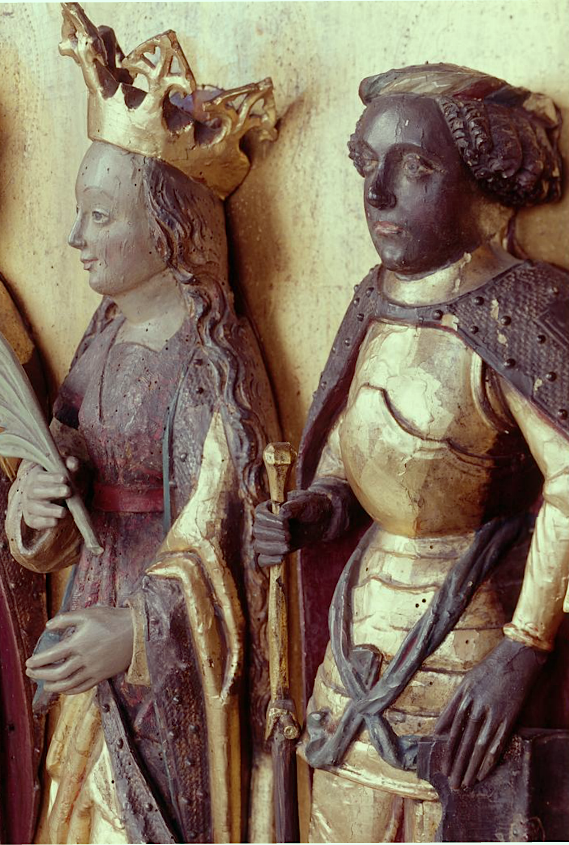
This does not mean that it would not be uncommon for people in remote little villages to see someone from another “race”, culture, skin colour, etc., it would be.
Yes, there were Medieval Europeans who would never see a black person, but claiming medieval Europe was completely white and freaking out because you see someone black in a medieval set film or tv drama is silly.
Remember; the Middle Ages lasted about a 1000 years and Medieval Europe was rather large.
I am not saying that ALL of Europe was racially diverse for ALL of the Medieval era, but saying ALL of Europe for ALL of the Medieval era was just white and people never ever saw dark skinned people or people of other races is a myth.
In this situation the word diverse is used to show that Medieval population of Europe was not as similar as people often think, not completely homogeneous.
Sources;
- A note on the evidence for African migrants in Britain from the Bronze Age to the medieval period, by Dr Caitlin Green.
- “Officially absent but actually present”: Bioarchaeological evidence for population diversity in London during the Black Death, AD 1348–50,’ by Rebecca Redfern and Joseph T. Hefner
- Black Knights, Green Knights, Knights of Color All A-Round: Race and the Round Table
- Black Central Europe
- African Europeans: An Untold History, by Olivette Otele
- Black Lives in the English Archives, 1500-1677: Imprints of the Invisible, by Imtiaz Habib
- Revealing the African Presence in Renaissance Europe, by Kate Lowe, Ben Vinson III, Joaneath Spicer, Natalie Zemon Davis
- The evidence for African migrants in Bronze Age-Medieval Britain, by Dr. Caitlin Green
- A timeline of black history in Britain
- African encounters in Roman Britain
- Bioarchaeological evidence for Black women in 14th century London
- The Earliest Evidence for Africans in Britain
- A note on the evidence for African migrants in Britain from the Bronze Age to the medieval period
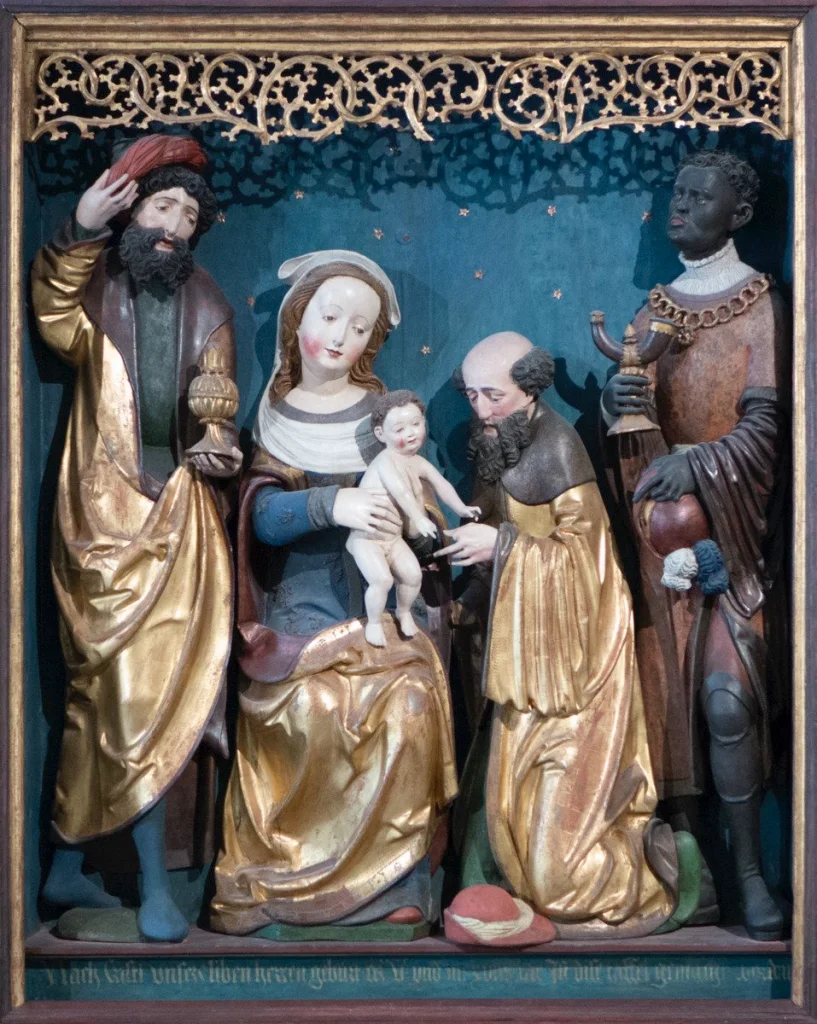
People were ignorant
Although education wasn’t available to all, the idea that the era was uneducated and ignorant is not correct.
It is often why the Medieval era (not just the early part) is still, incorrectly, called the ‘Dark Ages’ and defined as an era “characterized by ignorance, backward in learning, void of intellectual light”
The term is outdated and generally no longer used by what I like to call serious historians.
This idea of looking at the (early) Medieval era originated while the era was still going on, the person who developed the concept of ‘the Dark Ages’ is 14th century Francesco Petrarca/Petrarch.
Living in Rome and being a huge admirer of ancient Rome he, surprisingly, thought that everything had gotten worse after the collapse of the Roman empire.
His negative view of the previous centuries was political (he had power and quite a reputation) and biased.
In a way it is like any politician saying that when his people ruled the world everything was better.
Italian cardinal and ecclesiastical historian of the Roman Catholic Church Cesare Baronio coined the term “dark ages” as a way to describe the early Medieval era as a time of intellectual darkness but the term (and bad reputation was later used to describe all of the Medieval era, till quite recently.
It makes sense for Italians to think that things were great during the Roman empire and great when they got involved in the Renaissance and that everything between those two times was terrible.
The collapse after the Romans left of course did happen was nowhere near as big as people often seem to think, for starters life in Roman Europe somehow wasn’t fantastic for most people to begin with, it wasn’t as glorious an era as some think it was.
We all know the big cities and fancy villas but most people still lived as farmers or in little villages and they didn’t notice much of all those things the Romans ever did for them.
But there of course were some changes, from minimal ones that took centuries to take place in areas closer to Italy such as Gaul and Spain, to larger and more extreme ones at the outside of the empire, such as in Britain.
There was indeed a decline in technical capacity as the export and trade in certain goods such as ceramics and certain luxury goods came to a stop. Of course no longer being part of a colonial empire also meant a decline in long distance trade in general, it was not a good time economically speaking.
And there was also a decline in the knowledge of Greek as a language which did mean that an important source of knowledge became less accessible to the few that had access to it to begin with.
But Greek and Roman learning was never forgotten, the church had preserved it and those works that were no longer available were looked for and found by Christian scholars in the 11th century.
And the spread of Irish monastic schools (scriptoria) all over Europe laid the groundwork for the Carolingian Renaissance.
By the time the High Middle Ages Europe (1000-1250) was again taking the lead in scientific discovery.
Scholars also started translating old Greek but also Arabic texts, there was a lot of exchanging of ideas and knowledge going on, universities were established and scholars were encouraged to travel and have lectures all over Europe.
Of course Islamic and Jewish knowledge was of huge value but it was not necessarily non-European, people often forget that quite a large part of what we call Europe today was Islamic and Jewish, with other words, the distance between Medieval Europe and the Islamic or Hebrew world was not that big, in much of Europe Islamic and Hebrew knowledge, culture and science was part of life.
As often with science it is not one way traffic, when people interacted and cultures collided, clashed or combined, they learned from each other, then separately improved on it and then learned from each other again.
By 1200 translations of Ptolemy, Aristotle, Archimedes, Euclid and other Greeks and of Arab and Jewish writers Avicenna, Averroes and Maimonides had become available in Latin and expanded on and contributed to.
The Middle Ages ended when ‘The Renaissance’ started but the famous (overrated) Renaissance we all know (15th/16th century) was preceded by three other Renaissances!
The Carolingian Renaissance (8th and 9th centuries), Ottonian Renaissance (10th century) and the Renaissance of the 12th century.
Conclusion; there were several periods characterised by significant cultural renewal in (Western) Europe during the Middle Ages and the idea of Europe totally collapsing after the Romans left was long exaggerated.
The Middle Ages was an era of (major) medical, cultural, scientific, philosophical, literary advancement.
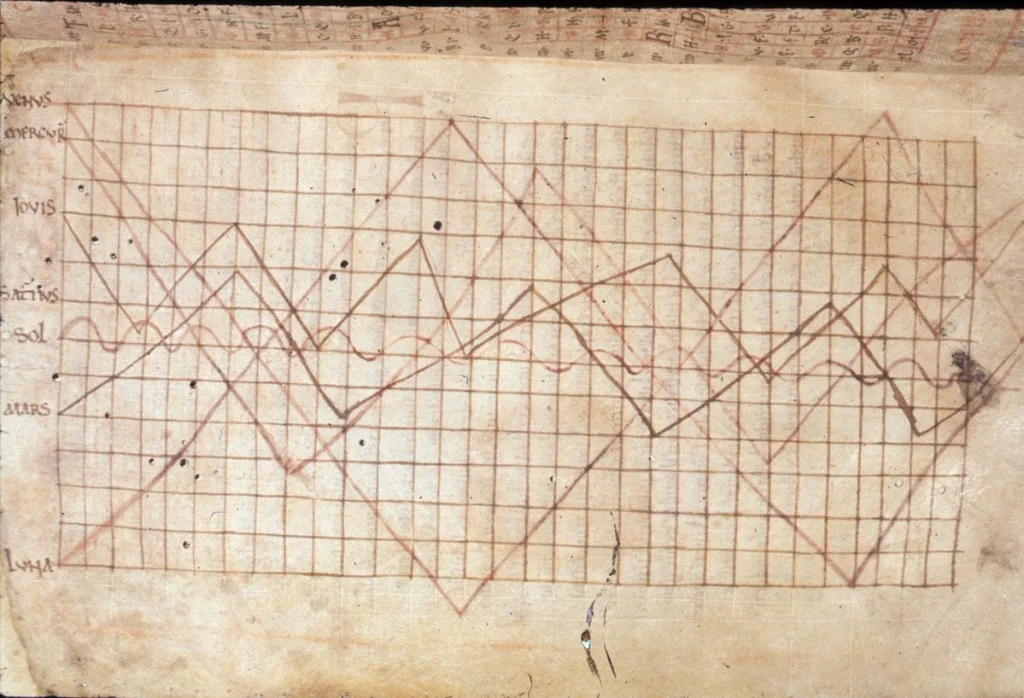
(BL, MS Royal 13 A XI, f. 143v)
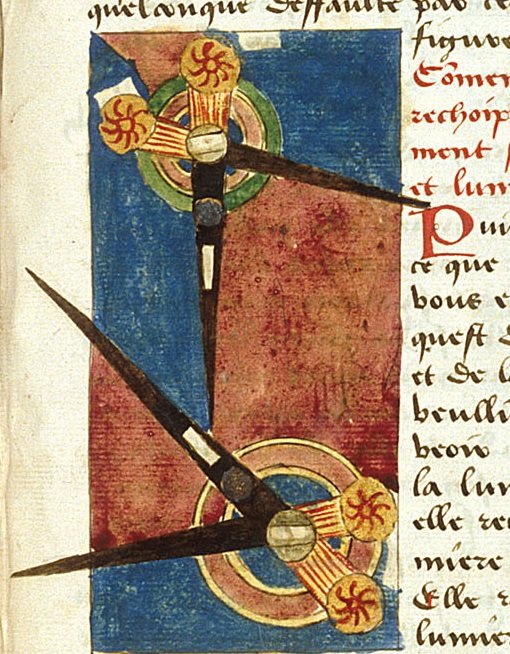
(BL, MS Royal 19 A IX f. 104, 106)
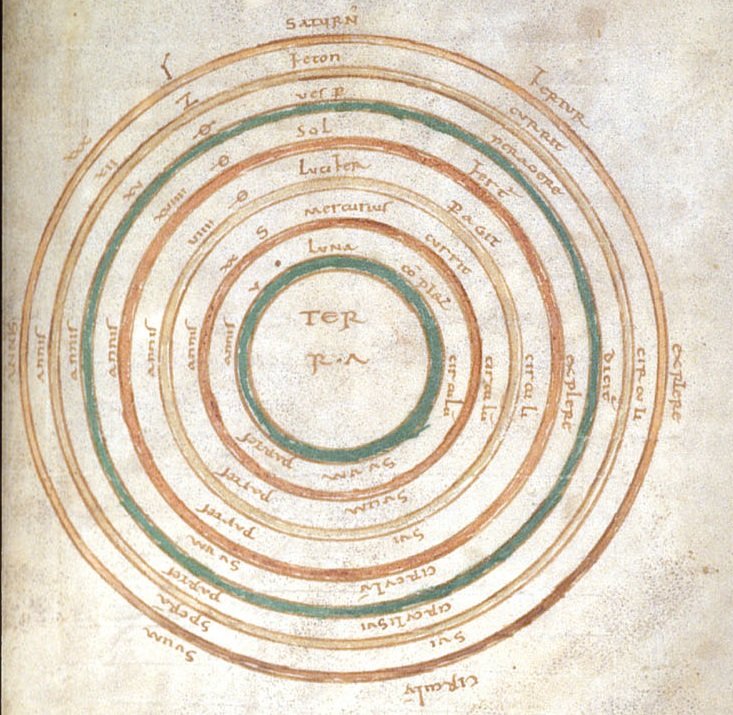
(BL, MS Harley 3017, f. 94)
Sources;
Erik Wade
Francesco Petrarca
Going Medieval
Medieval renaissances
Medieval philosophy
Medieval Medicine
Medieval science
On Medical Milestones, Being Racist, and Textbooks, Part I
On Medical Milestones, the Myth of Progress, and Textbooks, Part II
Slate
The Middle Ages of reason by Terry Jones
What we got wrong about the ‘dark ages’
Why The Dark Ages Were Actually A Time Of Great Achievement
No medical knowledge
Although of of course the world of medicine wasn’t as sophisticated as today, the idea that doctors had no idea what they were doing and all Roman and classical knowledge having been lost is also incorrect.
There were clean and well managed hospitals and skeletons show examples of complicated medical procedures that were successful.
Progress in medicine didn’t come to a stop when the Roman Empire collapsed, of some Greek and Roman knowledge was lost but quite a few advancements in surgery, medical chemistry, dissection, and practical medicine were made in the Medieval era.
Theodoric of Lucca wrote in the 13th century;
” Every day we see new instruments and new methods [to extract arrows] being invented by clever and ingenious surgeons.”
Everyone of course knows de famous female physicians Hildegard of Bingen (if you don’t, shame on you), who wrote about how the hospitals worked, the training people got, etc.
Domestic pharmacy properly began during the Middle Ages and this of course had a huge effect on the future of medicine.
Did you know that Medieval cities had more hospital beds than most modern cities today?
In some cities they realised that sexually transmitted diseases were infectious and prostitutes were regularly checked for this reason.
And yes, they had anaesthetics.
Prominent 14th century surgeon Guy de Chauliac wrote about inhalational anaesthesia, medicaments that send the patients to sleep made of opium, juice of the morel, Hyoscyamus, mandrake, ivy, hemlock and lettuce.
They would soak a fresh sponge with these juices, let it dry in the sun and when needed would put it into warm water and hold it under the nostrils of the patent until he or she falls asleep. (1)
They did external surgery on such things as facial ulcers and eye cataracts, they did internal surgery as well, to remove bladder stones for example and they learned how to use wine as an antiseptic.
Medieval surgeons removed arrows, dog bites, amputations, eye surgery and even brain surgery.
Another interesting quote;
“When you get up in the morning, stretch your limbs, so that the natural heat is stimulated. Then comb your hair because this removes dirt and comforts the brain. Wash your face with cold water to give your skin a good colour and to stimulate the natural heat.Clear your nose and your chest by coughing, and clean your teeth and gums with the bark of some scented tree.Exercise in moderation, because it is good to be tired; it stimulates the natural heat.”
Taddeo Alderotti, ‘On the Preservation of Health’, 13th century.
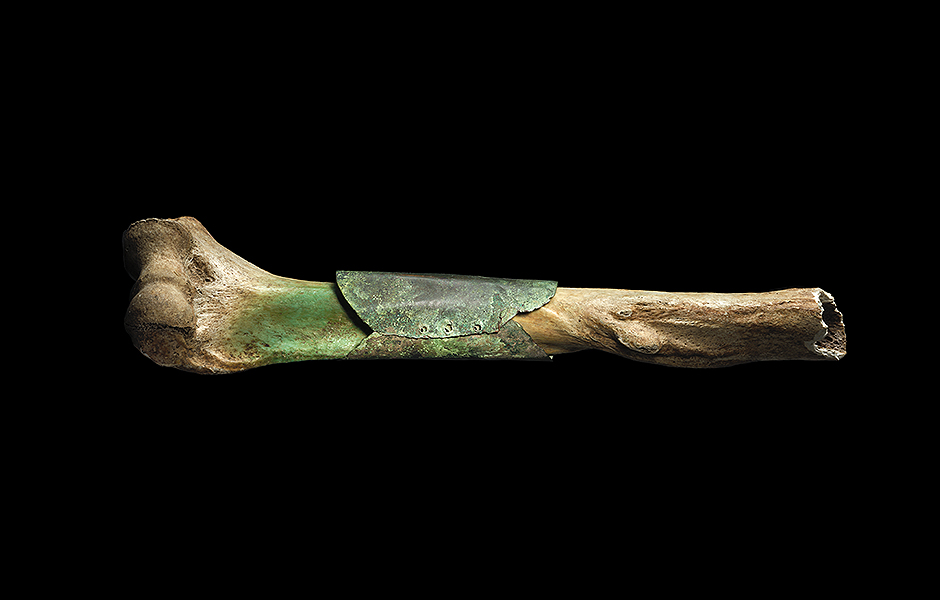
©Historiska museet Photograph; Pelle Bergström
PDF link to scientific research here
One could argue that our Medieval ancestors actually, in a way invented the hospital, pharmacies, eyeglasses, the concept of quarantine and more.
Sources;
- The Wondrous Story of Anesthesia, by Edmond I Eger II, Lawrence J. Saidman and Rod N. Westhorpe
- British Library
- Top 10 Medical Advances from the Middle Ages
- Wikipedia
- Theodoric of Lucca
- Medievalist
- Chirurgia by Roger Frugardi of Salerno (14th century)
- Ancestors of Inhalational Anesthesia: The Soponic Sponges (XItb-xvlltls Centuries), by Dr. Philippe Juvin and Dr. Jean-Marie Desmonts
- Anatomy and Surgery in Europe and the Middle East during the Middle Ages
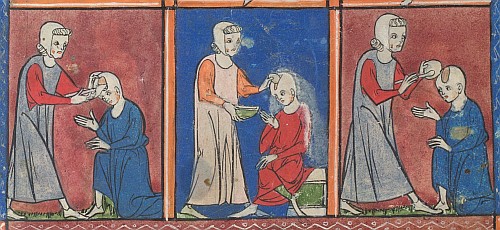
Death penalty common
We know the medieval world to be one where you saw gallows everywhere and you could be hanged, burned, quartered and horribly tortured for the smallest crimes.
Although these things did happen, they were not as common as often suggested.
Executing someone or locking them up cost a community money and there were other ways to punish someone that were much better for those in charge.
In many cases people were ordered to pay a fine in stead or go on pilgrimage.
This made the community money or at least didn’t cost them anything and in stead got rid of the trouble maker for a while in a way that would perhaps help those who told the bad guy to go on pilgrimage get into heaven, give them access to the possessions left behind and with a bit of luck he never returned.
No table manners
The cliche of medieval people eating with their hands and throwing leftovers on the ground is also a myth.
For the upper classes and all those looking up to them, such as merchants and the new middle classes, eating properly with decent manners and etiquette was very important.
You were expected to behave a certain way, several etiquette books have survived to this day and it’s clear from illustrations that meals involved certain ceremonies and behaviours.
For peasants and commoners it would also make no sense because even leftovers had value and could often be used to feed animals, to make things with, etc.
Of course people also washed their hands before, during and after eating.
Not just to appear civilised and well brought up but because people simply don’t like having dirt in their food or grease on their clothes and possessions.
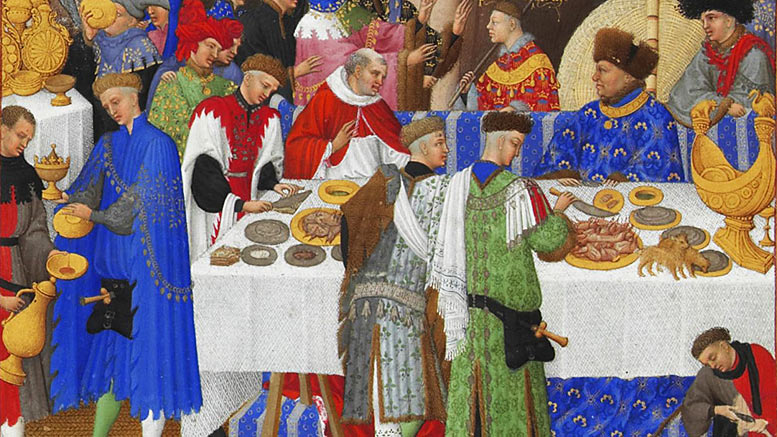
Torches all over the place
We see this in all movies and tv shows, random torches everywhere, not just in castles but also in streets.
Like medieval street lighting.
They are there because when people make a film or tv drama they want to be sure you see what is happening.
In reality candles, torches, oil lamps all cost money.
Torches don’t burn very long, 30-40 minutes tops, they are sticks with some cloth and fuel (generally) and they work great for a little while but if you’d want them as actual lighting on a wall or street, you’d need someone, or several people to run around replacing them constantly.
Oil lamps and candles were a lot more common but also generally not cheap,
The rushlight (a dried pith of the rush plant soaked in fat or grease in a holder) was the most common light source besides the fireplace.
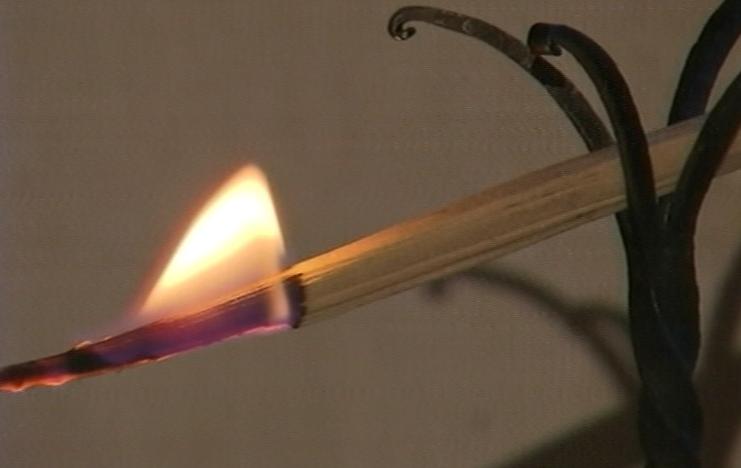
People used lights near them and when they went somewhere they carried them in a lantern.
Also the type of medieval torches used in castles that would burn longer than say 30-40 minutes didn’t look like we know from the films and tv dramas, in stead of a stick with some burnable material at the end they were long sticks entirely made of burnable material.
Sources;
Rushlights
Two finger salute
Although the two finger rude gesture, also known as The V-sign, probably dates back to Medieval times, the story about it originating at the battle of Agincourt when the French threatened English archers with cutting off their fingers is a myth.
There may be some truth to part of the story, there are contemporary records that claim the French did indeed make the threat.
Jean de Wavrin, an 15th century chronicler, wrote that Henry V addressed his men before the battle and told them; “…how the French were boasting that they would cut off three fingers of the right hand of all the archers that should be taken prisoners to the end that neither man nor horse should ever again be killed with their arrows.”. Yes, three fingers!
So although the threat may have been real, it involved three fingers, which makes the connection with the V-gesture already a bit iffy, but there’s more…
It does make more sense as those old longbows, especially the war-bows, are very difficult to operate with two fingers, many archers then and now prefer using three fingers.
And Wavrin was present at the battle, even though he was on the French side and probably didn’t hear the speech himself, he still is a very valuable source.
He does not however mention the gesture… other people present there, such as heralds, who’s job it was to record the battle, did also not mention anyone sticking one, two or three fingers in the air.
Which doesn’t mean it didn’t happen, but it is peculiar that one writer thinks the threat is noteworthy but then doesn’t write about the gestures being made that are supposedly related to it. We of course still don’t know for sure if what Henry (probably) said was based on something that really happened, a rumour or fake news, a bit of propaganda used to motivate his men to fight even harder. It sure would convince me to fight to the bitter end.
There is no real evidence of the French actually doing this to their captured archers and I’m yet to hear about archer’s skeletons being found who’s fingers were cut off.
And yes, by looking at a skeleton you can see if they were medieval archers and if missing fingers were cut off with a sharp tool.
It’s also just unlikely that archers got this special treatment, they had no real value to the enemy, literally, as they generally weren’t worth ransoming.
Taking them prisoner would be a hassle and even with two or three amputated fingers they could make themselves useful in battle one way or another.
It’s also a lot of work having to cut the fingers off every archer you capture, cutting the entire hand off would be much easier and faster. Although killing your prisoners was frowned upon and didn’t always happen, their chances of survival after being caught were not always great.
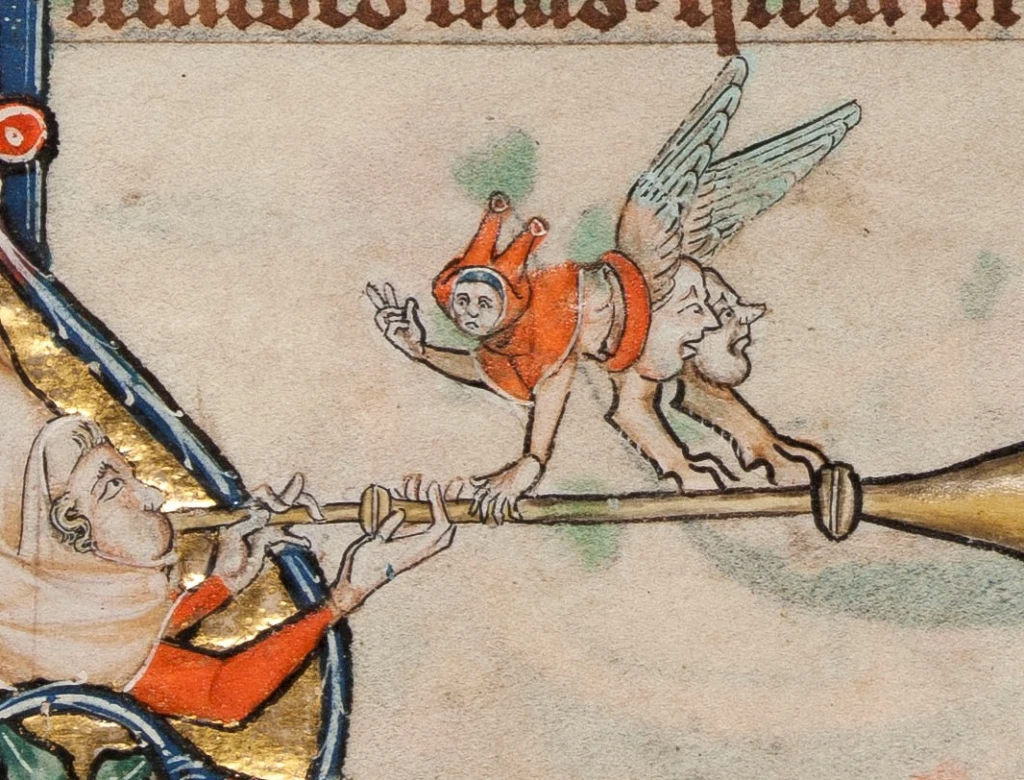
So what about the gesture?
It probably was a rude gesture during the middle ages, the first clear description of the V-gesture as an insult comes from the book ‘Pantagruel, written by François Rabelais in 1532.
In the chapter “How Panurge put to a nonplus the Englishman that argued by signs” the author describes an argument fought with gestures; “Then stretched he out the forefinger and middle finger or medical of his right hand, holding them asunder as much as he could, and thrusting them towards Thaumast.”.
The story (it’s very funny) contains many other gestures that are so clearly described that you can’t help but try them as you read them and some of the other gestures are very familiar to us to this day.
This is very convincing evidence that at least some 16th century people knew the gesture as being rude and it is interesting that it is an Englishman who uses it.
But after just a couple of mentions the gesture appears to vanish from history and doesn’t show up again till the 20th century!
Film footage shot by Mitchell and Kenyon shows men standing in line outside the Parkgate Iron and Steel company in Rotherham in 1901, and one of the men, clearly not too pleased about being filmed, makes the gesture.
It is odd though that the gesture managed to avoid being depicted or even described for several centuries. So what we end up with is a story about French archers cutting off 3 fingers when they capture English archers, something that can’t be proven to have actually happened.
We know there was a rude V-gesture in the 16th century and likely before that time, but it then vanishes till a Edwardian chap outside a factory sticks up two fingers at the camera in a rude manner.
And a story that connects the gesture with the Agincourt archers that appears out of nowhere just a few decades ago.
With other words, there is no evidence whatsoever that the gesture came about because of the threat French soldiers made towards the English archers at Agincourt.
Sources;
Medievalists.net
Agingcourt600
Oxford Reference
BS historian
Reuters
Agincourt, by Anne Curry
Agincourt, myth & reality 1415-2015, by Stephen Cooper
Word Myths: Debunking Linguistic Urban Legends, by David Wilton
Armies and Warfare in the Middle Ages The English Experience, by Michael Prestwich
Finally…
Several myths are busted in this wonderful funny and educational series; Terry Jones ‘Medieval lives’.
Make sure you check out all episodes;
If you enjoy my writing check out my book!
If you like my work, please consider supporting me on Patreon;

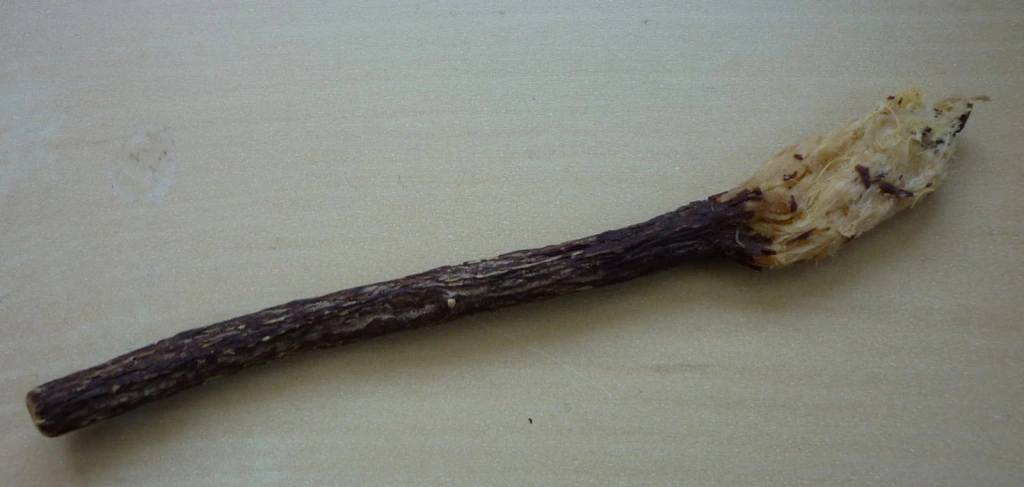

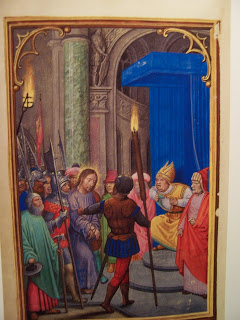
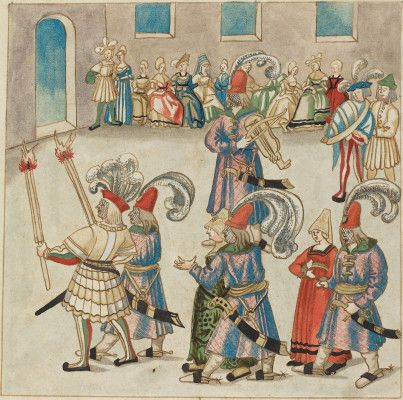

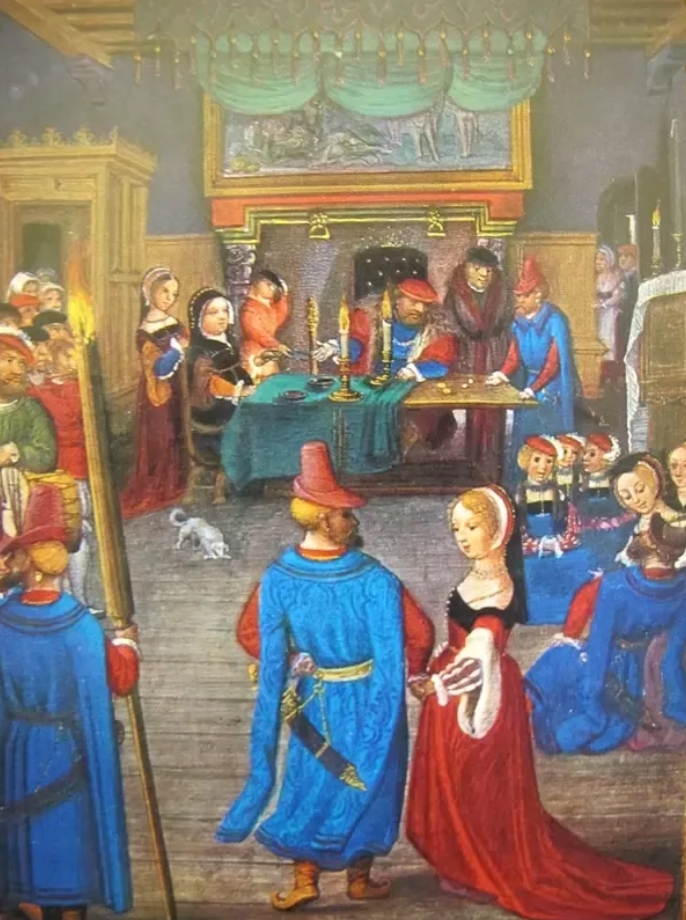
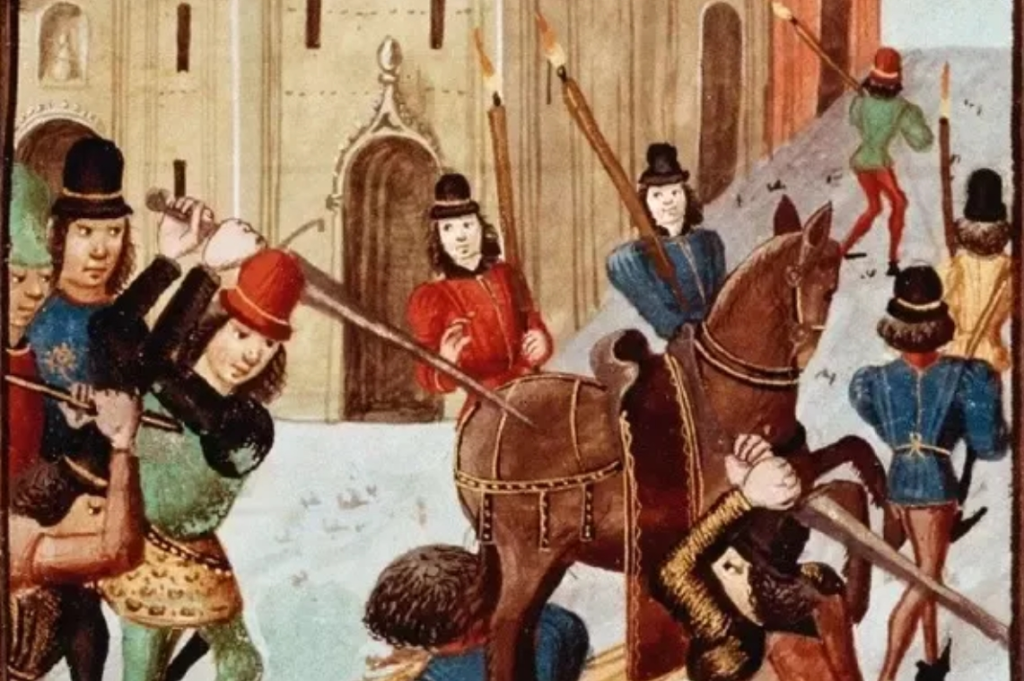
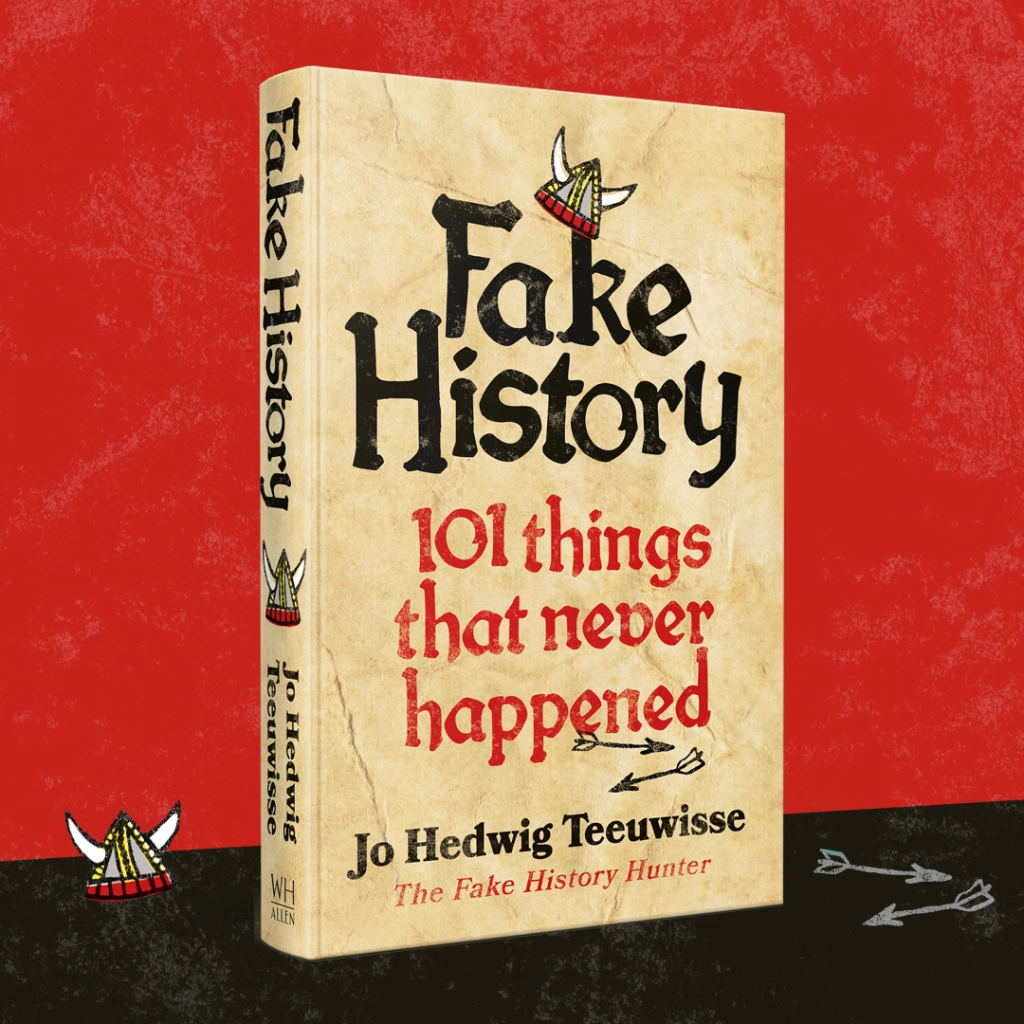

The woman emptying the chamber pot comes from Sebastian Brant’s “Ship of Fools” (“Narrenschiff”), printed at Basel in 1494.
LikeLiked by 1 person
Thank you!
Image updated, info added 🙂
LikeLike
What a brilliant read.
Thank you.
LikeLike
I’m a specialist in medieval glass tableware and just read your article from Twitter and you’re spot on. It makes me crazy when you see people in medieval and Renaissance banquets drinking from metal goblets when the table glass industry during that period was extensive and produced some really incredible pieces.
LikeLike
Absolutely fascinating! Thank you for this ❤️
LikeLike
I believe it’s “gardez l’eau” for look out for the water, as gare à l’eau has introduced for some reason the idea of a french train station.
LikeLike
A common theme in many of these misconceptions is “this thing would have been more expensive or harder to do in the Medieval era, therefore they never did that.”
LikeLiked by 1 person
“Of course if plaque went untreated and turned into tartar the teeth would look yellow and smell bad, however this too kept bacteria from actually damaging the teeth underneath.”
This
Is
Not
True.
I am a dentist. This is the exact opposite of the truth.
The bacteria that accumulate on the teeth and harden due to calcium from blood and saliva do *not* protect the teeth. They accumulate not in the areas that commonly decay (chewing surfaces and between teeth) but on the gumline, and they cause massive destruction of bone and gum, causing teeth to become loose and fall out. Also, the people who have higher levels of gum disease tend to have lower incidence of caries, and vice versa, because they either have a preponderance of caries causing bacteria or gum disease causing bacteria. Not both.
Even the photo of the skull you posted shows tremendous bone loss in the upper and lower anterior teeth. The poor woman probably couldn’t bite into anything for fear of her teeth ripping out.
LikeLike
Thank you, loved it, just like I loved Terry Jones’s (sadly missed) series a few years ago. However: it seems to me the text was written in a hurry and needs to be proof read and edited (repetitions).
LikeLike
The section on women’s rights is short. Of course women had jobs (meaning two jobs, doing all the household work without labor-saving machinery, plus, often, other work like farming, spinning, weaving, pottery, keeping shops, bakery, etc etc. But there’s no mention of couverture, which meant that *for women* all that work was also unpaid. The money went to whichever man was associated with them. It took being quite high up the social ladder to claw some of that money back, or else it meant being a spinster in the original meaning, and that had its own problems in insanely patriarchal societies.
Another point you raise, about medicine, relates to my own academic specialty: the effective treatments were often the work of not-particularly-respected women applying empirical knowledge. The more “spectacular” and worse-than-useless practices were thoroughly based on the theoretical medical framework of the time and employed by men.
Also, about life span. Yes, surviving childhood was a big deal. But if you were female, surviving your reproductive years was another big deal. The life span of women was lower than men because of that.
My point being, I think you’re overcompensating for the bad press medieval times have had. Yes, things weren’t as uniformly Hollywood-sensational as we’re told. But they also weren’t just a low-tech version of now.
Which isn’t to say you don’t bring up lots of interesting points! A very good read, especially about some of the low tech solutions they did have.
LikeLike
Yes, the women’s section is far from finished, I hope to find time to work on that soon, especially about the women who took over from their husbands and had jobs most people won’t know existed, like blacksmiths!
And yes, I should write a bit more about the risks of childbirth, when I correct people on twitter I usually say “If you survived childhood/birth you’d have a decent shot at living into your 60s”.
On the other hand women dying so often is also another thing that brings the average down, so it’s important to add for two reasons.
I’m absolutely doing a bit of over-compensating because my goal is to make sure people get rid of decades, sometimes centuries old myths and stuff they’ve been taught in school and on tv, to stamp that out you sometimes have to use a sledgehammer in stead of a regular hammer.
I do hope to keep that from getting out of hand and put in a bit of balance here and there.
But as the intro said, it’s a work in progress and probably never completely done 😉
Thanks for your input, keep an eye on it, I’ll keep improving it 🙂
LikeLike
The only exception to the “Khights’ armor too heavy to move in” would be the late period jousting armor, where it was intended only to be worn on a horse, with no need for free movement, that in some extremes, like 16th-century Germany, evolved into little more than a man-shaped armored box, and the armor for the lower body and legs would often be incorporated into the horse armor — about as far from actual combat gear as you could get
LikeLike
Thank you for this interesting read! Many of these myths where taught during history class at my secondary school. Just as you stated, indeed really a sign of how stubborn some of these myths where.
LikeLike